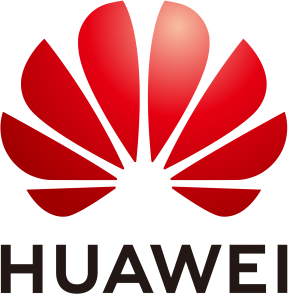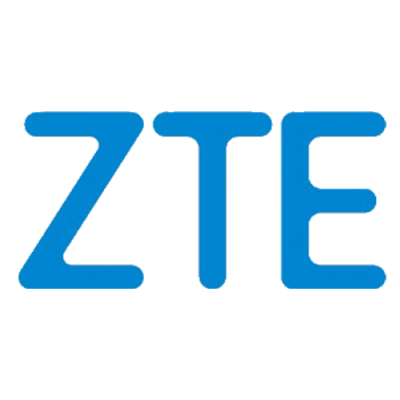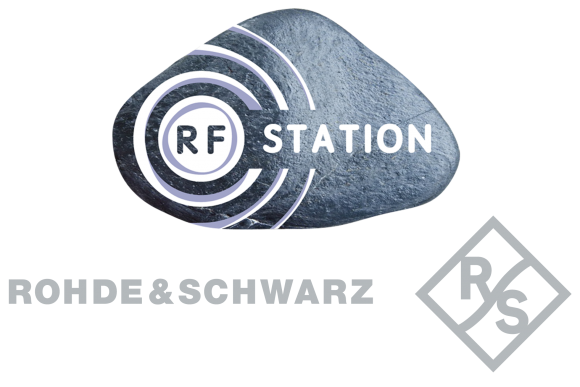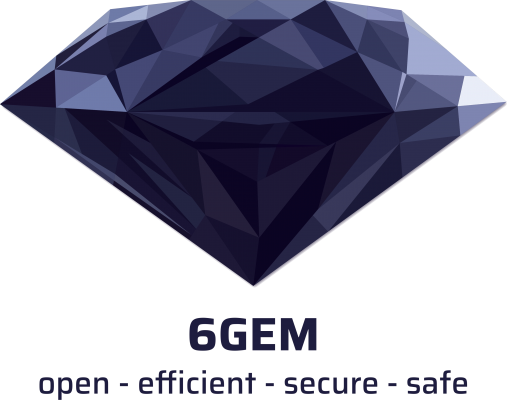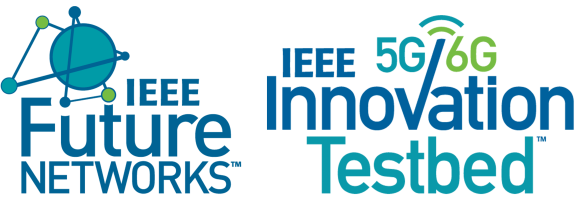The 2023 IEEE GLOBECOM continues to provide an extensive industrial program designed to provide opportunities for the practicing industry professional to both share and learn about the latest ideas, trends, and product innovations in the broader communications and networking industries while connecting with their peers and other prominent leaders in the industry.
*All times are MALAYSIA (GMT+8)
LIST OF PANELS:
- IPA 1: When Integrated Sensing and Communication (ISAC) meets Networked Robotics
- IPA 2: Convergence of wireless communications and computer vision: a new paradigm created by the CONVERGE project
- IPA 3: Standardization and Industrialization for Reconfigurable Intelligent Surfaces
- IPA 4: Intelligent Communications Multimodal Services in 6G: Requirements, Architectural Impact, and Challenges
- IPA 5: Transforming Wireless Networks: Unleashing the Power of Large Language Models
- IPA 6: New multiple access for next-generation mobile networks
- IPA 7: Explore the brain-like intelligence for beyond 5G
- IPA 8: 6G Networks: A European perspective towards a global standard
- IPA 9: Unlocking the Power of Reconfigurable Intelligent Surfaces and Holographic Antennas: Exploring Design, Use-Cases, Deployment, and Network Opportunitie
- IPA 10: The need for Smart solutions empowered by Sensing, AI/ML, 5G and Beyond
- IPA 11: Accelerating Sustainable Development Goals with IoT Innovation
IPA 1: WHEN INTEGRATED SENSING AND COMMUNICATION (ISAC) MEETS NETWORKED ROBOTICS
TUESDAY, DEC 5 2.00 - 3:30 / LOCATION: Hall 8A
Moderator: Peiying Zhu, Huawei Technologies, Canada
Panelists:
- Patrick Waldemar, Telenor Group, Norway.
- Nuria González-Prelci, NC State University, US
- Narcis Cardona, Universitat Politecnica de Valencia, Spain
- Hao Bi, MediaTek, US.
Abstract:
ISAC has been now widely recognized by ITU-R as one of most important 6G key enabler and adopted as one of the usage scenarios in the framework of IMT-2030. With integrated sensing capability, 6G will be no longer just a platform that connects everything. It will be an intelligent platform that offers both integrated sensing and communications (ISAC) and integrated computing and communications. This platform will provide intelligent services and applications for industries to create greater social value. Bit transmission is not the only function of the 6G network. The physical world will be reconstructed and represented by using the propagation properties of radio waves such as reflection, scattering, refraction, and multipath. The 6G network will serve as a sensing network and 6G terminals will serve as sensing terminals. With network sensing and terminal sensing working in tandem, we can model the physical world covered by the entire network based on 6G. The sensing data extracted from the 6G network will not just be used for modeling the physical world, it will also serve as a big data source and entry for AI learning. Network sensing will enable a new usage scenario beyond communications, covering a series of use cases, including device-based or device-free target positioning, imaging, environment reconstruction and monitoring, and gesture and action recognition. Such use cases will be widely applied to industries, including human-machine coordination, environment reconstruction for smart cities, climate sensing, healthcare, and security detection.
Questions:
- Most promising use cases for networked robotics beyond 2030?
- How can ISAC strengthen robotics collaboration in the typical use cases?
- Which will be the most important metric for networked robotics? Communication latency, sensing latency, accuracy, reliability, or?
- What are the technical challenges for ISAC + networked robotics? What will be the enabling technologies?
- It is expected in 6G that intelligence is distributed everywhere. How can AI contribute to ISAC + networked robotics?
Biography:
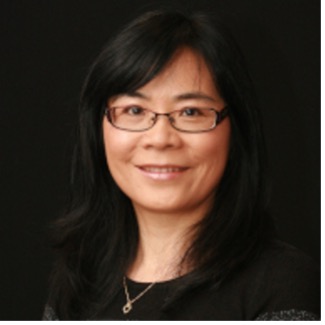 PEIYING ZHU
PEIYING ZHU
Peiying Zhu (Fellow, IEEE), Senior Vice President of Wireless Research, a Huawei Fellow, IEEE Fellow and Fellow of Canadian Academy of Engineering. She is currently leading 5G and beyond wireless research and standardization in Huawei. The focus of her research is advanced radio access technologies. She is actively involved in 3GPP and IEEE 802 standards development. She has been regularly giving talks and panel discussions on 5G vision and enabling technologies. She led the team to contribute significantly to 5G technologies. Prior to joining Huawei in 2009, Peiying was a Nortel Fellow and Director of Advanced Wireless Access Technology in the Nortel Wireless Technology Lab. She led the team and pioneered research and prototyping on MIMO-OFDM and Multi-hop relay. Many of these technologies developed by the team have been adopted into LTE standards and 4G products. Dr. Zhu has more than 200 granted patents.
 PATRICK WALDEMAR
PATRICK WALDEMAR
Patrick Waldemar is VP Telenor Research, Telenor Group. Patrick Waldemar joined Telenor in 2002 and is Vice President in Telenor Research. He has more than 20 years of management experience and education within Strategic Management, Strategic Marketing and Information Technology. He holds a Ph.D. in Telecommunication from NTNU and a Master of Management from Oslo Business School (BI). He has experience from research & development in telecommunications and the oil industry, software development and strategic management work. Over the last 8 years, Patrick has been head of Telenor's research on next generation network technologies focusing on 5G and 6G. Previously he has been head of development in Canal Digital.
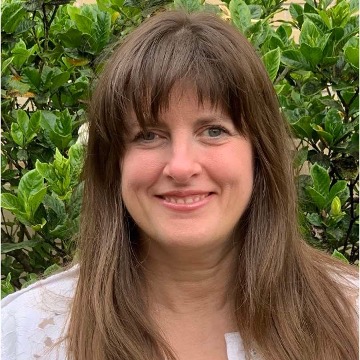 NURIA GONZALEZ-PRELCIC
NURIA GONZALEZ-PRELCIC
Dr. González Prelcic (SM, IEEE) received her Ph.D. with Honors in 2000 from the University of Vigo, Spain. She joined the faculty at NC State as an Associate Professor in 2020 and will be joining the ECE Department at UC San Diego as a Full Professor in January 2023. She was previously an Associate Professor in the Signal Theory and Communications Department at the University of Vigo, Spain, and also held visiting positions at the University of Texas at Austin and the University of New Mexico. She was also the founding director of the Atlantic Research Center for Information and Communication Technologies (atlanTTic) at the University of Vigo (2008-2017). Her main research interests include signal processing and machine learning for wireless communications, with a focus on MIMO processing for mmWave communication, joint localization, sensing and communication, sensor-aided communication, signal processing under hardware impairments, vehicular communication, and multiantenna technology for LEO satellite communication. She has published more than 150 papers in these areas, including a highly cited tutorial on signal processing for mmWave MIMO published in the IEEE Journal of Selected Topics in Signal Processing which has received the 2020 IEEE SPS Donald G. Fink Overview Paper Award, and a paper pioneering the idea of enabling automotive radar with a WiFi waveform that won the 2022 IEEE Vehicular Technology Society Best Vehicular Electronics Paper Award. Her recent work on ML-based joint localization and communication has also received a best paper award at SPAWC 2023. She is the lead editor in the forthcoming special issue on integrated sensing and communication featured by the IEEE Signal Processing Magazine. She was an Editor for IEEE Transactions in Wireless Communications (2016-2020). She is currently an Editor for IEEE Transactions in Communications. She is a member of the IEEE Signal Processing Society TWG on Integrated Sensing and Communication, SAM Technical Committee, SPCOM Technical Committee and IEEE SPS Education Board.
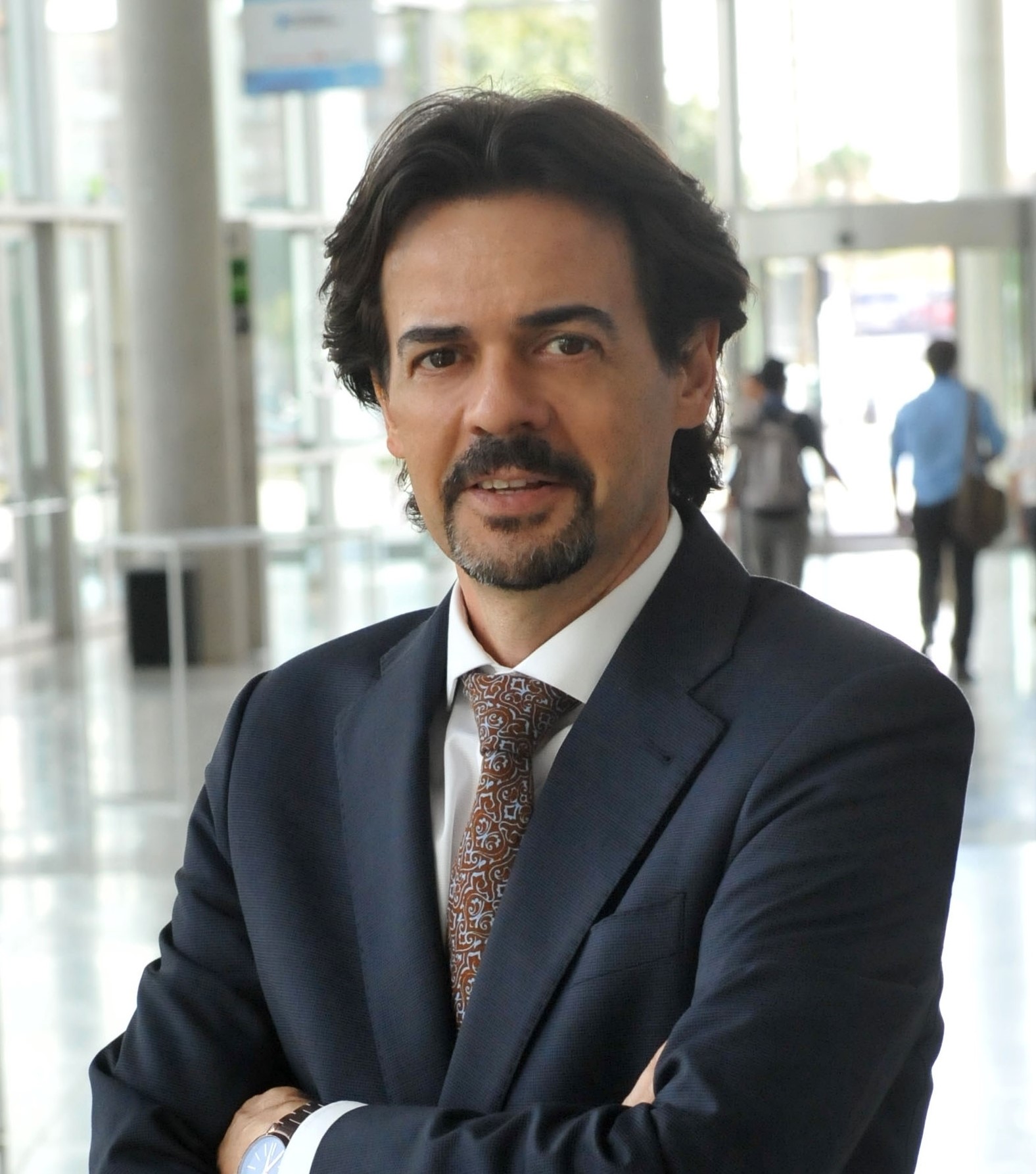 NARCIS CARDONA
NARCIS CARDONA
Prof. Cardona is the Director of the Research Institute of Telecommunications and Multimedia Applications (iTEAM) of the Universitat Politecnica de Valencia, with over 180 researchers, including assistant professors & research fellows. Prof. Cardona has led National and European research projects and Networks of Excellence in FP6, FP7 and H2020, having being the Chairman of COST IC1004 and ARCO5G, Vice-Chairman of COST273 and IRACON, P.I. of WAVECOMBE (H2020), and member of the Steering Board of METIS (7FP), WIBEC (H2020), METIS2(H2020), the National Committee CCARS, and partner of the 5G-PPP projects 5G-XCAST, 5G-TOURS, 5G-SMART, 5G-CARMEN, INGENIOUS, FUDGE-5G, 5G-RECORDS. He has been General Chair of IEEE ISWCS 2006, IEEE PIMRC 2016, and EuCNC 2019; TPC Chair of IEEE VTC 2015; and organizer of the Global 5G Event in 2019. After 30+ years of experience, he has authored 14 patents, more than 300 scientific publications, and several international books. Prof Cardona has supervised 25 PhD thesis and led 70+ research projects in cooperation with industries. He has been advisor of the start-up companies Ingenia Telecom, Kenmei Technologies, A4Radar, and Fivecomm, among others, always in the field of Mobile and Wireless Communications. Prof. Cardona is currently the director of the 6G Joint Innovation Center iTEAM-Huawei, and Vice-chair of the One6G association.
 HAO BI
HAO BI
Hao Bi is a renowned research and innovation leader in the development of wireless communication technologies. He has broad expertise and taken various research and standards leadership roles in driving innovation and standardization of air interface, radio access network, and packet core network from 3G CDMA, to 4G LTE, to 5G NR. He has successfully conceived and developed multiple key features with profound standards and market traction, led large multi-site engineering teams, and delivered strategic innovations shaping the evolution of cellular communication systems. Currently as Senior Director of Communication System Design in MediaTek, he is leading 6G research and standards at the intersection of communication and computing, immersive multimedia, and artificial intelligence.
IPA 2: CONVERGENCE OF WIRELESS COMMUNICATIONS AND COMPUTER VISION: A NEW PARADIGM CREATED BY THE CONVERGE PROJECT
TUESDAY, DEC 5 2.00 - 3:30 / LOCATION: Hall 8B
Moderator: Manuel Ricardo, University of Porto and INESC TEC, Portugal
Panelists:
- Serge Fdida, Sorbonne Université, France
- Youssef Nasser, Greenerwave, France
- Ivan Seskar, Rutgers University, USA
- Hamed Tavakoli, Nokia, Finland
Abstract:
The EU-funded CONVERGE project will develop an innovative toolset consisting of (1) vision-aided reconfigurable intelligent surfaces enabling experimentation of massive MIMO wireless communications and 3D localisation and environment sensing, (2) vision-aided fixed and mobile 5G base stations enabling communications and experimentation with mobile terminals, (3) vision-radio simulator and 3D environment modeller to create a digital twin allowing for experiment planning, as well as machine learning algorithms for processing multimodal data, including communications signals, video streams, as well as radio frequency sensing and network traffic traces. This toolset will be installed in experimental chambers and used by experimenters (accessing remotely or locally) to pre-configure the positions and mobility patterns of mobile base stations, obstacles, and user equipment, configure test sessions and run experiments, potentially involving humans, to gather vision-radio datasets.
Although telecommunications and computer vision belong to distinct scientific fields, this is set to change with the creation of a new joint research field resulting from the advent of wireless communications based on millimetre-wave radios with line-of-sight operating ranges. This opened the possibility of leveraging on computer vision data to predict wireless channel dynamics and help build high-definition 3D maps for localisation and sensing applications while, on the other hand, radio-based data/imaging can help computer vision applications becoming more resilient against occlusion and poor luminosity.
CONVERGE aims to make the tools accessible to the scientific and industrial community and provide them with open datasets of experimental and simulated data obtained with the toolset, in alignment with the ESFRI SLICES-RI. Relevant impacts in the verticals of telecommunications, automotive, health, manufacturing and media are expected.
The goal of the panel is to discuss new potential opportunities and challenges that can be anticipated by the usage of tools combining radio with computer vision, including potential contributions to science, standards, and industry verticals.
Questions:
- Why is it important to create scientific/instrumentation tools for the vision-communications convergence field and what should be their main characteristics?
- What are the main research questions that these tools will help scientific community to answer?
- What new applications can be enabled by this vision-communications convergence field and what will be their impact in vertical markets?
- How to open the tools and produced datasets, including video, to the community and how to deal with ethics and GDPR?
- Which standardisation impacts are expected?
Biography:
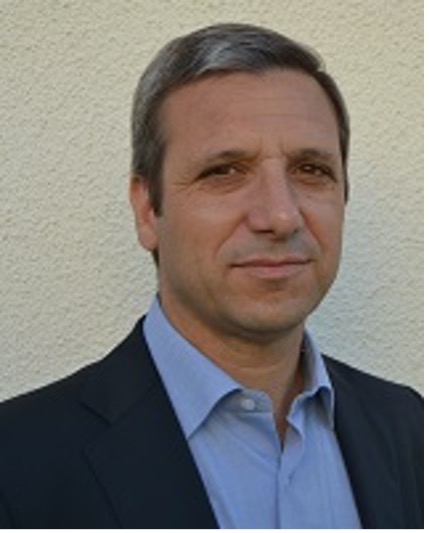 MANUEL RICARDO
MANUEL RICARDO
Manuel Ricardo has Licenciatura, MSc and PhD (2000) degrees in Electrical and Computers Engineering (Telecommunications) from University of Porto - Faculty of Engineering (FEUP). He is a full professor at FEUP and the head of the Electrical and Computers Department, where he also teaches since 1997 courses on computer networks and mobile communications in programs at bachelor, master, and doctoral levels. He was a member of several teaching committees including the MSc in EEC, Doctoral Program in Telecommunications, and PhD program in EEC. He develops his research activities at the INESC TEC research institute. He is the president of the Scientific Council of this institute and an associate director for the telecommunications area. At this institute, he created the Wireless Networks research group (25+ researchers), coordinated the Centre for Telecommunications and Multimedia (100+ researchers), coordinated the cluster of research centres on Networked Intelligent Systems (~250 researchers), and was member of the board of directors (2018-2021). His research areas of interest are mobile communications systems, quality of service, traffic engineering, radio resource management, and performance evaluation. He participated or coordinated 30+ research projects, half of them European research projects. Currently, he is the scientific coordinator of the European CONVERGE research project. Manuel Ricardo published 150+ research papers and supervised 18 PhD and 60+ MSc theses. He was the chair of 3 relevant scientific conferences: EUCNC & 6G Summit 2021, Wireless Days 2017, and WNS3 workshop 2017. Manuel Ricardo created and coordinates the Portuguese research thematic Network on Mobile Communications (RTCM) in 2004 which has organized 34 workshops since then. He is member of the steering committee of the European Union supported conference on Communications and Networks (EUCNC) and member of the Advisory Board of the ns-3 network simulator consortium.
 SERGE FDIDA
SERGE FDIDA
Serge Fdida is a Professor with Sorbonne Université since 1995. His research interests are related to the future internet technology and architecture. He has been leading many research projects in Europe, notably pioneering the activity on federated Internet testbeds. He established PlanetLab Europe in 2007 and the OneLab and FIT facilities. He was one of the founders of the ACM Conext conference, general chair of ACM Mobicom 2015 and IEEE Infocom 2019. Serge Fdida has also developed a strong experience related to innovation and industry transfer, he was the co-founder of the Qosmos and Hopcast companies, one of the active contributors to the creation of the Cap Digital cluster in Paris and President of EIT Health France. He is currently coordinating SLICES, the first large-scale scientific instrument in Digital Sciences, supported by the EU ESFRI framework. Serge Fdida received his PhD from Université Pierre & Marie Curie (UPMC), Paris in 1984. He received his Habilitation in 1989. Assistant professor UPMC (1983-1987). Associate professor UPMC (1988-1991). Professor Université Paris Descartes (1991-1995). Sabbatical at IBM Raleigh in 1995. Professor Sorbonne Université. Adviser ITC Department CNRS (2000-2005). Vice-President European affairs of UPMC (2014-2018). VP International Development of Sorbonne Université (2018-2021).
 YOUSSEF NASSER
YOUSSEF NASSER
Youssef Nasser obtained his executive MBA from the prestigious ESCP Business School in Paris, in 2022, and his PhD in wireless communications in 2006 from National Polytechnic Institute of Grenoble. He is currently the Director of 5G/6G Business Unit with Greenerwave, a French startup developing reconfigurable intelligent surfaces, smart and holographic antennas. Youssef is a Senior Executive with over twenty years’ experience in the Telecom world, shared between academia and industry including major industrial groups. Longwise, his motivation and passion for technology have led him into the entrepreneurship world through a startup on spectrum management. Along his career, he has successfully led major R&D and industrial projects in the telecom industry including but not limited to 4G, 5G, DVB. Some of these projects have received gold and silver awards from the European Commission for their achievements. He has deployed several technological solutions in telecom sector and actively contributed to several telecom standards. He has chaired several industry associations and technology development conferences. He published over 130 articles in internationally renowned journals and conferences.
 IVAN SESKAR
IVAN SESKAR
Ivan Seskar is the Chief Technologist and Director/IT at WINLAB, Rutgers University responsible for experimental systems and prototyping projects. He is currently the program director for the COSMOS project responsible for the New York City NSF PAWR deployment. He has also been the co-PI and project manager for all three phases of the NSF-supported ORBIT mid-scale testbed project at WINLAB, successfully leading technology development and operations since the testbed was released as a community resource in 2005 and for which the team received the 2008 NSF Alexander Schwarzkopf Prize for Technological Innovation. Ivan is a co-chair of the IEEE INGR Testbed Working Group, member of the IEEE Standardization Programs Development Board and the co-founder and CTO of Upside Wireless Inc.
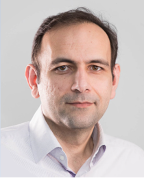 HAMED TAVAKOLI
HAMED TAVAKOLI
Hamed Tavakoli is currently serving as the Head of Visual AI Systems Research at Nokia, where he also held the position of Principal Scientist, both in Visual AI and Machine Learning, at Nokia from 2019 to 2022. He led the Intelligent Media Processing group, successfully delivering algorithms and technologies for both academic and industrial products. During his tenure, Hamed played a key role in shaping the research direction of the group, focusing on neural network compression, federated learning, and computer vision. He was a research scientist at Silo.AI and has held several research positions at Tampere University, Aalto University, and the University of Oulu. Hamed obtained his Master of Science from the Islamic Azad University in Iran and his doctoral degree from the University of Oulu, Finland in 2014. He has published over 75 scientific articles in academic forums, including flagship conferences and journals in computer vision and currently holds over 12 patents.
IPA 3: STANDARDIZATION AND INDUSTRIALIZATION FOR RECONFIGURABLE INTELLIGENT SURFACES (RIS)
TUESDAY, DEC 5 4.00 - 5:30 / LOCATION: Hall 8A
Moderator: Ruiqi (Richie) Liu
Panelists:
Abstract:
With the deployment of 5G networks and the start of standardizing 5G-Advanced, both academia and industry are exploring actively into future technologies for next generation wireless communication systems. Reconfigurable intelligent surfaces (RISs) have been envisioned to reduce the energy consumption and improve the spectral efficiency of wireless networks by artificially re-configuring the propagation environment of electromagnetic waves. RIS-based transmission, in which the large number of small, low-cost, and passive elements on RIS only reflect the incident signal with an adjustable reflection amplitude and phase shift without requiring a dedicated energy source for radio frequency processing, decoding or encoding, is completely different from existing active relays and open up a new area of research for wireless communications. RISs are being discussed actively in regional and global standardization development organizations and are likely to become a critical component of 5G-Advanced networks.
This panel of experts will be engaged in discussions of
- Analysis of RIS-assisted communication capacities, with a focus on the typical scenarios identified by early standardization efforts
- Practical use cases for RIS in future networks
- Design, testing and trials of RIS which will make impact to standardization of this particular technology
- Communication protocols for RIS-assisted communication systems
- Autonomous deployment of RIS
Questions:
- The ITU-R WP5D has agreed on 6 usages scenarios along with new capabilities, how do you foresee the role of facilitating these scenarios / capabilities?
- Researches involving RIS would typically require the research team to build a prototype and conduct tests to verify some of their ideas. For smaller research teams which cannot afford a prototype, what are the possible ways to follow the research of RIS and contribute?
- (To operators) Can you share some results regarding your trials on RIS deployed in 5G / 5G-Adv networks?
- Will RIS be really decreasing the overall power consumption of the network, as some suggest that RIS might also need dedicated power source?
- What are the key challenges to integrate RIS into commercial networks?
Biography:
 RUIQI (RICHIE) LIU
RUIQI (RICHIE) LIU
Ruiqi (Richie) Liu (S'14-M'20) received the B.S. and M.S. degree (with honors) in electronic engineering from the Department of Electronic Engineering, Tsinghua University in 2016 and 2019 respectively. He is now a master researcher in the wireless research institute of ZTE Corporation, responsible for long-term research as well as standardization. His main research interests include reconfigurable intelligent surfaces, integrated sensing and communication and wireless positioning. He is the author or co-author of several books and book chapters. He has participated in national key research projects as the researcher or research lead. During his 3-year service at 3GPP from 2019 to 2022, he has authored and submitted more than 500 technical documents with over 100 of them approved, and he served as the co-rapporteur of the work item (WI) on NR RRM enhancement and the feature lead of multiple features. He currently serves as the Vice Chair of ISG RIS in the ETSI. He actively participates in organizing committees, technical sessions, workshops, symposia and industry panels in IEEE conferences as the chair, organizer, moderator, panelist or invited speaker. He served as the guest editor for Digital Signal Processing and the lead guest editor for the special issue on 6G in IEEE OJCOMS. He serves as the Editor of ITU Journal of Future and Evolving Technologies (ITU J-FET) and the Associate Editor of IET Quantum Communication. He is the Standardization Officer for IEEE ComSoc ETI on reconfigurable intelligent surfaces (ETI-RIS) and the Standards Liaison Officer for IEEE ComSoc Signal Processing and Computing for Communications Technical Committee (SPCC-TC). He received the Outstanding Service Award from the SPCC-TC in 2022.
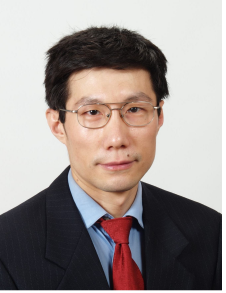 YIFEI YUAN
YIFEI YUAN
Yifei Yuan received his Bachelor & Master degrees from Tsinghua University of China, and a Ph. D. from Carnegie Mellon University, USA. He was with Alcatel-Lucent from 2000 to 2008, working on 3G/4G key technologies. From 2008 to 2020, he was with ZTE as technical director and chief engineer responsible for standards research on LTE-Advanced and 5G. Since January 2020, he has been with China Mobile Research Institute as Chief Expert, responsible for advanced research of 6G air interface. His research interests include MIMO, channel coding, non-orthogonal multiple access (NOMA), internet-of-things (IoT), resource scheduling. He has extensive publications, including 10 books on LTE-Advanced relay, LTE-Advanced key technologies & system performance, narrow-band (NB) IoT, 5G NR channel coding, 5G ultra-dense networks (UDN), 5G non-orthogonal multiple access, 5G random access enhancements, respectively. He has over 50 granted US patents. He is the rapporteur of NOMA study item in 3GPP. He is the recipient of Best Paper Award by IEEE Communications Society Asia-Pacific Board for a paper on NOMA in IEEE Communications Magazine. He serves as the editors of IEEE Communications Letters, and China Communications.
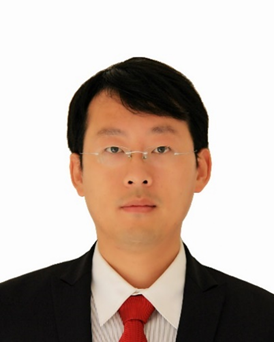 GAOJIE CHEN
GAOJIE CHEN
Dr Gaojie Chen (IEEE Senior Member) is an Assistant Professor with the Institute for Communication Systems, 5GIC & 6GIC, University of Surrey, U.K. His current research interests include wireless communications, satellite communications, the Internet of Things and secrecy communications. He has authored over 200 IEEE journals/conferences and two patents, one invited book chapter. He was listed as the World’s Top 2% Scientist by Stanford University in 2022 and 2023. He received the Best Paper Award from the IEEE IECON 2023 and the Exemplary Reviewer Award of the IEEE Wireless Communications Letters in 2018, the IEEE Transactions on Communications in 2019 and the IEEE Communications Letters in 2020 and 2021; and the Exemplary Editor Awards of the IEEE Communications Letters and IEEE Wireless Communications Letters in 2021 and 2022, respectively. He served as an Editor for the IEEE Journal on Selected Areas in Communications-Machine Learning in Communications from 2021-2022. He serves as an Editor for the IEEE Transactions on Wireless Communications, the IEEE Communications Letters, IEEE Wireless Communications Letters and a Panel Member of the Royal Society’s International Exchanges, UK..
 QINGQING WU
QINGQING WU
Qingqing Wu is an Associate Professor with Shanghai Jiao Tong University. His current research interest includes intelligent reflecting surface (IRS), unmanned aerial vehicle (UAV) communications, and MIMO transceiver design. He has coauthored more than 100 IEEE journal papers with 29 ESI highly cited papers and 9 ESI hot papers, which have received more than 20,000 Google citations. He was listed as the Clarivate ESI Highly Cited Researcher in 2022 and 2021, the Most Influential Scholar Award in AI-2000 by Aminer in 2021 and World’s Top 2% Scientist by Stanford University in 2020 and 2021. He was the recipient of the IEEE Communications Society Fred Ellersick Prize, IEEE Best Tutorial Paper Award in 2023, Asia-Pacific Best Young Researcher Award and Outstanding Paper Award in 2022, Young Author Best Paper Award in 2021, the Outstanding Ph.D. Thesis Award of China Institute of Communications in 2017, the IEEE ICCC Best Paper Award in 2021, and WCSP Best Paper Award in 2015. He was the Exemplary Editor of IEEE Communications Letters in 2019. He serves as an Associate Editor for IEEE Transactions on Communications, IEEE Communications Letters, and IEEE Wireless Communications Letters. He is the Lead Guest Editor for IEEE Journal on Selected Areas in Communications and the workshop co-chair for IEEE ICC 2019-2023 and IEEE GLOBECOM 2020. He serves as the Workshops and Symposia Officer of Reconfigurable Intelligent Surfaces Emerging Technology Initiative and Research Blog Officer?of Aerial Communications Emerging Technology Initiative. He is the IEEE Communications Society Young Professional Chair in Asia Pacific Region.
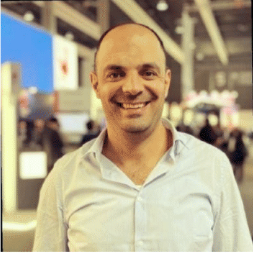 YOUSSEF NASSER
YOUSSEF NASSER
Youssef Nasser obtained his executive MBA from the prestigiousESCP Business School in Paris, in 2022, and his PhD in wirelesscommunications in 2006 from National Polytechnic Institute ofGrenoble.He is currently the Director of 5G/6G Business Unit withGreenerwave, a French startup developing reconfigurable intelligentsurfaces, smart and holographic antennas.Youssef is a Senior Executive with over twenty years’ experience inthe Telecom world, shared between academia and industry includingmajor industrial groups. Longwise, his motivation and passion fortechnology have led him into the entrepreneurship world through astartup on spectrum management.Along his career, he has successfully led major R&D and industrialprojects in the telecom industry including but not limited to 4G, 5G,DVB. Some of these projects have received gold and silver awardsfrom the European Commission for their achievements. He hasdeployed several technological solutions in telecom sector andactively contributed to several telecom standards. He has chairedseveral industry associations and technology developmentconferences. He published over 130 articles in internationallyrenowned journals and conferences.His areas of interest aremobilecommunications systems,spectrum management, telecomstrategies
IPA 4: INTELLIGENT COMMUNICATIONS MULTIMODAL SERVICES IN 6G: REQUIREMENTS, ARCHITECTURAL IMPACT AND CHALLENGES
TUESDAY, DEC 5 4.00 - 5:30 / LOCATION: Hall 8B
Moderator: Periklis Chatzimisios, International Hellenic University, Greece and University of New Mexico, USA,
Panelists:
- Ana Garcia Armada, Universidad Carlos III de Madrid, Spain
- Frank Fitzek, TU Dresden, Germany
- Nima Afraz, University College Dublin, Ireland
- RangaRao Venkatesha Prasad, Delft University of Technology (TU Delft), Netherlands
Abstract:
Increasing demands of remote operation in post pandemic era mainly in healthcare and automation systems have driven further developments of the Tactile Internet (TI) and the advancement of related standards such as IEEE 1918.1. The Tactile Internet facilitates multimodal communication and perception (such as sight, voice, haptic, and emotion) among humans and machines/robots to ensure high visual quality, low motion-to-photon latency, and real-time tactile and control experience over wireless networks. Thus, TI requires a combination/integration of sensing, communication, and actuation/ control for tele-operation.
Multimodal (including haptic) communication services enriches interactions in various industry use cases such as industrial remote operations. The user in controller domain utilises the controlled devices (actuators e.g., robotic arm) for performing operations remotely. Thus, the resulting bi-directional multi-modal communication poses stringent requirements on the underlying communication such as, ultra-low latency and ultra-high reliability, availability and security.
While 5G Ultra-Reliable Low-Latency Communications (URLLC) capability is well aligned with the TI low latency requirements, TI applications in different vertical industries have unique requirements on top of URLLC, such as global connectivity, high mobility, low jitter and multimodal synchronicity. The Panel will discuss where the current communication systems fall short to satisfy these requirements and what needs to be overcome in 6G for future multimodal communication solutions to be ready for the full vision of the Tactile Internet.
This Panel is endorsed by the one6G Association (https://one6g.org/)
Questions:
- Requirements: How to define, test and measure different verticals’ future communication requirements?
- Enabling technologies: Which are the main elements that may allow us to achieve the stringent requirements?
- Architecture impacts: Which are the 6G architecture impacts to feature full integration of sensing, computation and control in communication networks?
- Standards: Discussion about the route towards 6G research outputs for standardisation and challenges, cross SDOs collaboration for harmonised and interoperable standards
- Challenges: Which are the most important challenges including sustainability, energy efficiency, social innovation and other key topics?
Biography:
 PERIKLIS CHATZIMISIOS
PERIKLIS CHATZIMISIOS
Periklis Chatzimisios serves as a Professor in the Department of Information and Electronic Engineering at the International Hellenic University (Greece). Moreover, he has been awarded the title of Researcher Professor by the University of New Mexico (USA). He is also a Visiting Fellow in the Faculty of Science & Technology, Bournemouth University (UK). He is currently serving as Vice-Chair for Working Group 1 (Use cases, KPIs and future market and business scenarios), Chair of the Working Item 213 (Multimodal sensing, computing, communication and control for 6G remote operation) and a Board Member for the one6G Association.
Dr. Chatzimisios is/has been involved in several standardization and IEEE activities mainly under the IEEE Communication Society (ComSoc) serving as the co-Chair of the Communications and Networking Committee for the IEEE Public Safety Technology Initiative, Chair of the ComSoc Young Professionals (YP) Standing Committee and as a Member of the ComSoc Education Services Board, the ComSoc Standards Program Development Board, the ComSoc Industry Outreach Board and the ComSoc Online Content Board. He is the Chair of the Communications Chapter and Professional Activities for the IEEE Greece Section.
Prof. Chatzimisios has participated as a researcher and scientific officer in many European and national research and development projects funded by European Commission, Institute of International Education (IIE) and national agencies. He holds various management positions as Coordinator/WG Chair/Vice Chair and Training/Standardization Chair in several research projects. He is in the Top 2% Most Influential Scientists in the Stanford University list (years 2022-2020) in the area of Networking & Telecommunications.
 ANA GARCÍA ARMADA
ANA GARCÍA ARMADA
Ana García Armada (Senior Member, IEEE) is currently a Professor with Universidad Carlos III de Madrid, Spain. Prof. Armada is serving as Vice Chair of the Working Item 213 (Multimodal sensing, computing, communication and control for 6G remote operation) for the one6G Association. She has published approximately 200 refereed papers and holds four patents. Her research interest includes signal processing applied to wireless communications. She serves on the editorial board for IEEE Transactions on Communications and Open Journal of the IEEE Communications Society. She has served for TPC of more than 50 conferences. She has been part of many organizing committees. She has received several awards from Universidad Carlos III de Madrid, including an Excellent Young Researcher Award and an Award for Best Practices in Teaching. She was awarded the Bell Labs Prize 2014 (third place) for shaping the future of information and communications technology. She received the Outstanding Service Award from the IEEE ComSoc Signal Processing for Communications and Computing Technical Committee (formerly SPCE).
 FRANK H. P. FITZEK
FRANK H. P. FITZEK
Frank H. P. Fitzek is a Professor and head of the “Deutsche Telekom Chair of Communication Networks” at TU Dresden. He is the spokesman of the DFG Cluster of Excellence CeTI and the 6G-life hub in Germany. He received his diploma (Dipl.-Ing.) degree in electrical engineering from the University of Technology – Rheinisch-Westfalische Technische Hochschule (RWTH) – Aachen, Germany, in 1997 and his Ph.D. (Dr.-Ing.) in Electrical Engineering from the Technical University Berlin, Germany in 2002 and became Adjunct Professor at the University of Ferrara, Italy in the same year. In 2003 he joined Aalborg University as Associate Professor and later became Professor. He co-founded several start-up companies starting with acticom GmbH in Berlin in 1999. He has visited various research institutes including Massachusetts Institute of Technology (MIT), VTT, and Arizona State University. In 2005 he won the YRP award for the work on MIMO MDC and received the Young Elite Researcher Award of Denmark. He was selected to receive the NOKIA Champion Award several times in a row from 2007 to 2011. In 2008 he was awarded the Nokia Achievement Award for his work on cooperative networks. In 2011 he received the SAPERE AUDE research grant from the Danish government and in 2012 he received the Vodafone Innovation prize. In 2015 he was awarded the honorary degree “Doctor Honoris Causa” from Budapest University of Technology and Economics (BUTE). His current research interests are in the areas of 5G/6G communication networks, in-network computing, network coding, compressed sensing, post-Shannon theory, quantum and molecular communication, as well as human-machine interaction in the virtual worlds.
 NIMA AFRAZ
NIMA AFRAZ
Nima Afraz is an Assistant Professor in the School of Computer Science, at University College Dublin. He is a funded investigator at SFI CONNECT Centre and his research focuses on Open-RAN, blockchain applications in telecoms, the economics of networks and network virtualisation. Nima is a recipient of the government of Ireland postdoctoral fellowship and worked as a postdoctoral fellow to address the challenges in the adoption of blockchain technology in telecommunications. Nima is the vice-chair of the Linux Foundation’s Hyperledger telecom special interest group. He received his PhD in computer science from Trinity College Dublin, Ireland, in 2020.
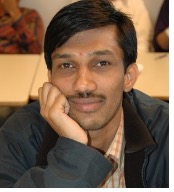 RANGARAO VENKATESHA PRASAD
RANGARAO VENKATESHA PRASAD
RangaRao Venkatesha Prasad. I am an Associate Professor at Embedded Software group of Delft University of Technology since 2013. My research interests are in the area of Tactile Internet, Internet of Things (IoT), Cyber Physical Systems (CPS), Energy Harvesting and 60 GHz millimeter wave networks. I have supervised 18 PhD students (15 graduated, 3 ongoing) and more than 40 MSc students (36 graduated). I have participated in several European and Dutch national projects in the area of IoTs, 60 GHz communications, Smart-energy systems, Personal networks and Cognitive Radios. I have (co)authored more than 200 publications in the peer-reviewed international transactions/journals and conferences. I was responsible for the signing of an MoU between IISc-TUDelft. In 2015, I received 4TU University Teaching Qualification diploma with distinction. I have served on the editorial board of many international journals and magazines including IEEE Transaction on Green Communication Networks, IEEE JSAC, IEEE Communication Magazine, IEEE Surveys and Tutorials and Elsevier-Communication Networks. I am a regular reviewer for many prestigious journals and conferences and serves as the TPC member for various conferences. I am also contributing to the academic community by leading many IEEE activities, such as memberships of standards boards, leading technical committees, etc. I was nominated as the vice-chair of IEEE Tactile Internet standardization group. For my excellent research contributions, I am selected as the IEEE ComSoc Distinguished Lecturer on Internet of Things for the period 2016-2018. From 2005-12 I was a senior researcher and adjunct faculty at TU Delft working on the EU FP7 Magnet (and Beyond) Project and the Dutch project PNP-2008 on Personal Networks (PNs), Future Home Networks, etc. I completed my PhD from IISc, Bangalore, India in 2003. I am a senior member of IEEE and ACM.
IPA 5: TRANSFORMING WIRELESS NETWORKS: UNLEASHING THE POWER OF LARGE LANGUAGE MODELS
WEDNESDAY, DEC 6 2.00 - 3:30 / LOCATION: Hall 8A
Moderator: Lina Bariah, Technology Innovation Institute, UAE
Panelists:
- Wen Tong, Huawei Wireless, Canada
- Merouane Debbah, Khalifa University, UAE
- Manzoor Khan, Nokia Bell Labs, USA
- Hao Xu, Qualcomm, China
- Mischa Dohler, Ericsson Inc., USA
Abstract:
As a powerful branch of artificial intelligence (AI), generative AI has emerged as a concept for innovative AI algorithms that are capable of generating human-like content, including text, images, videos, etc., setting the scene for a new era of intelligent self-governed machines. As a unique field within the generative AI paradigm, large language models (LLMs) hold a significant promise in reshaping the future of intelligence. The rapid evolution of large language models (LLMs) has brought revolutionary changes to various domains, and the wireless networking landscape is no exception. Recently, LLMs have been proposed to leverage their immense potential in transforming traditional wireless networks into intelligent, efficient, and autonomous communication systems. In particular, by harnessing the power of LLMs, we can revolutionize the design, optimization, and management of wireless networks, paving the way for robust and intelligent connectivity solutions. This panel discussion aims to delve into the emerging field of "Large Language Models for Wireless Networks," exploring the opportunities, challenges, and future directions for leveraging these powerful language models in the realm of wireless communications. The collective insights gained from this discussion will contribute to advancing the understanding and adoption of LLMs in revolutionizing the wireless communication infrastructure, paving the way for a smarter, more efficient, and inclusive wireless future. The panel discussion will encompass a wide range of topics, including, but are not limited to, the capabilities and potential applications of LLMs in the context of wireless networks, LLMs for network planning and optimization, LLM for network operation, scalability, energy efficiency, and regulatory aspects of Telecom LLM, and LLM-empowered edge intelligence.
Questions:
- How can large language models assist in improving network planning and deployment strategies for wireless networks, considering factors such as coverage, capacity, resource management, and user demand?
- Discuss the challenges and opportunities of integrating large language models with emerging wireless technologies like 5G, edge computing, and Internet of Things (IoT), and their potential to drive innovation and enable new services and applications.
- How LLMs can be the key to enable collective intelligence, through the deployment of a massive number of generative agents, and how this will impact future wireless networks.
- How can large language models facilitate effective network troubleshooting and fault detection in wireless networks, aiding in rapid problem resolution and minimizing service disruptions for end-users?
- Explore the collaboration opportunities between wireless network providers, language model developers, and regulatory bodies to establish guidelines, standards, and policies for the responsible and effective use of large language models in the transformation of wireless networks.
Biography:
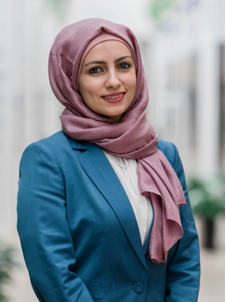 LINA BARIAH
LINA BARIAH
Lina Bariah (Senior Member, IEEE) received the M.Sc. and Ph.D. degrees in communications engineering from Khalifa University, Abu Dhabi, UAE, in 2015 and 2018, respectively. She was a Visiting Researcher with the Department of Systems and Computer Engineering, Carleton University, Ottawa, ON, Canada, in 2019, and an affiliate research fellow, James Watt School of Engineering, University of Glasgow, UK. She is currently a Senior Researcher at the technology Innovation institute, an Adjunct Faculty at Khalifa University, and an Adjunct Research Professor, Western University, Canada. She is a senior member of the IEEE, IEEE Communications Society, IEEE Vehicular Technology Society, and IEEE Women in Engineering. She is currently an Associate Editor for the IEEE Communication Letters, an Associate Editor for the IEEE Open Journal of the Communications Society, and an Area Editor for Physical Communication (Elsevier). She is a Guest Editor in IEEE Communication Magazine, IEEE Network Magazine, and IEEE Open Journal of Vehicular Technology. Dr. Bariah has organized several workshops/special sessions in IEEE flagship conferences including IEEE VTC and IEEE ICC. She was a member of the technical program committee of a number of IEEE conferences, such as ICC and Globecom. She serves as a session chair and an active reviewer for numerous IEEE conferences and journals.
 WEN TONG
WEN TONG
Wen Tong (Fellow, IEEE) received the B.S. degree from the Department of Radio Engineering, Nanjing Institute of Technology, Nanjing, China, in 1984, and the M.Sc. and Ph.D. degrees in electrical engineering from Concordia University, Montreal, QC, Canada, in 1986 and 1993, respectively. He joined the Wireless Technology Labs, Bell Northern Research, Canada, in 1995. In 2011, he was appointed as the Head of the Communications Technologies Labs, Huawei. He also spearheads and leads Huawei’s 5G wireless technologies research and development. Prior to joining Huawei in 2009, he was the Nortel Fellow and the Head of the Network Technology Labs, Nortel. He is currently the Huawei Fellow and the CTO of Huawei Wireless. He is the Head of the Huawei Wireless Research. He pioneered fundamental technologies from 1G to 5G wireless with more than 500 awarded U.S. patents. He was elected as a Huawei Fellow. He was a recipient of the IEEE Communications Society Industry Innovation Award for “the leadership and contributions in development of 3G and 4G wireless systems” in 2014, and the IEEE Communications Society Distinguished Industry Leader Award for “pioneering technical contributions and leadership in the mobile communications industry and innovation in 5G mobile communications technology” in 2018. He is a fellow of the Canadian Academy of Engineering and a fellow of Royal Society of Canada. He also serves as the Board of Director for WiFi Alliance.
 MÉROUANE DEBBAH
MÉROUANE DEBBAH
Mérouane Debbah (Fellow, IEEE) is a researcher, educator and technology entrepreneur. Over his career, he has founded several public and industrial research centers, start-ups and is now Professor at Khalifa University of Science and Technology in Abu Dhabi and founding Director of the 6G center. He is a frequent keynote speaker at international events in the field of telecommunication and AI. His research has been lying at the interface of fundamental mathematics, algorithms, statistics, information and communication sciences with a special focus on random matrix theory and learning algorithms. In the Communication field, he has been at the heart of the development of small cells (4G), Massive MIMO (5G) and Large Intelligent Surfaces (6G) technologies. In the AI field, he is known for his work on Large Language Models, distributed AI systems for networks and semantic communications. He received multiple prestigious distinctions, prizes and best paper awards (more than 35 best paper awards) for his contributions to both fields and according to research.com is ranked as the best scientist in France in the field of Electronics and Electrical Engineering. He is an IEEE Fellow, a WWRF Fellow, a Eurasip Fellow, an AAIA Fellow, an Institut Louis Bachelier Fellow and a Membre émérite SEE.
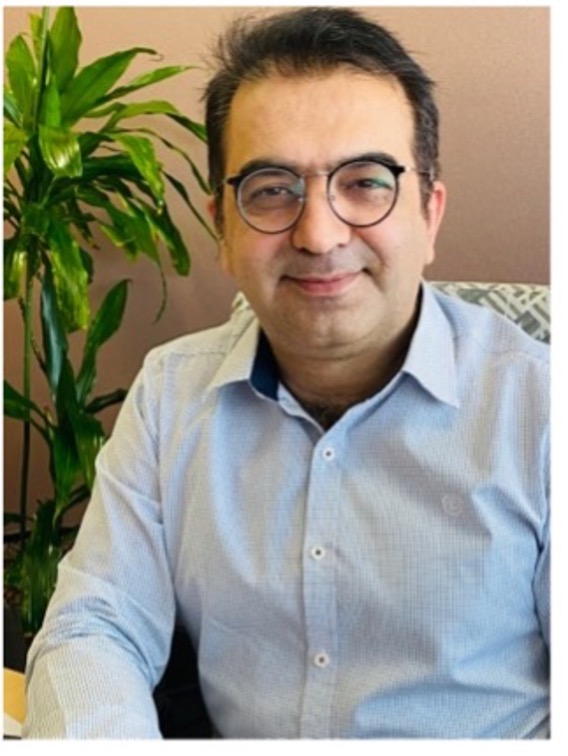 MANZOOR KHAN
MANZOOR KHAN
Manzoor Khan is the head of Autonomous Systems Research Department at Nokia Bell Labs, Murray Hill, USA. Prior to joining Nokia Bell Labs, Dr. Khan served as head of Connected and Autonomous Mobility research group at Emirates Center of Mobility Research Center and faculty at Collage of Computer & Network Engineering, Collage of IT, UAEU. He has also served as the Research Director, Director of Network and Mobility Competence Center, and (P)Dozent at Distributed Artificial Intelligence Laboratory of Technical University Berlin, Germany. He led various large and medium scale R&D projects in Europe, Germany and UAE. Amongst others he served as the technical lead of one of Germany’s flagship research projects towards autonomous driving in Berlin. He was country (Germany)trial site leader for a European Union large-scale project focusing on Intelligent vehicles and smart communication. He led various large scale industry research projects on the topics of autonomous network management and intelligent mobility. He also served in key roles in various EU, EIT-Digital, Celtic Next research activities. Dr. Khan's research interests include implanting intelligence in future mobile networks, AI/ML enabled services for different verticals, Quality of Experience, and future mobile networks. He has been involved in designing and development of large-scale demonstrators. Dr. Khan is the recipient of several best paper awards and appreciation certificates. He is the author of several scientific publications including conference papers, journal articles, and book chapters.
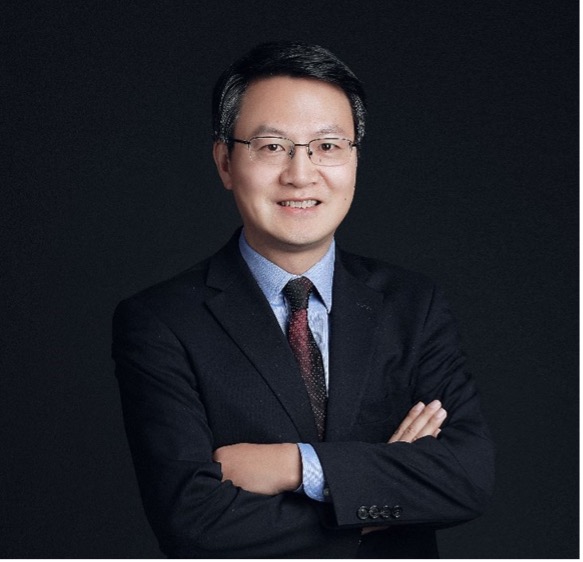 HAO XU
HAO XU
Hao Xu is currently the head of Qualcomm Research China. Since 2003, Dr. Hao Xu has been working at Qualcomm R&D, where his main research focus is on wireless communications system design. He has led various research, prototyping, and 3GPP standardization topics from 3G to 5G wireless technologies. Since 2017, he has also been leading research in robotics and artificial intelligence, with focus on computer vision applications for robotics and on-device AI algorithm study. Prior to Qualcomm, he worked at Bell Lab’s Wireless Communication Research Lab from 2000 to 2003, where the first MIMO system (BLAST) was invented. In 2003, he received the Bell-Labs President Gold Metal Award. Dr. Hao Xu has 800+ US issued patents. He has numerous journal and conference publications, and had served a few years as an Associate Editor for IEEE Transactions on Wireless Communications. Dr. Hao Xu has been recognized as the Person of the Year of 2019 “Golden Trend Award” by Huanqiu and the Top 10 5G Leading Figures by Communications World in 2018. In addition, the “5G Boundless XR Solution,” led and promoted by Dr. Hao Xu’s team and jointly realized with ecosystem partners in China, have won numerous industry awards, including the “Best International Application Award” in the 5th “Blooming Cup” 5G Application Competition, and GTI Awards 2023 “Innovative Mobile Service and Application Award” and “Outstanding Award.” Dr. Hao Xu received his B.S and M.S. from Moscow Power Engineering Institute and Technical University, Russia, in 1994 and 1996, respectively. He received his Ph.D. from Virginia Tech in 2000. During his Ph.D. research, he pioneered the millimeter-wave propagation research at 38 GHz and 60 GHz with Dr. T. Rappaport. In 1999, he received the IEEE Communications Society Steve Rice Award with Dr. G. Durgin and Dr. T. Rappaport.
 MISCHA DOHLER
MISCHA DOHLER
Mischa Dohler (Fellow, IEEE) is now VP Emerging Technologies at Ericsson Inc. in Silicon Valley, working on cutting-edge topics of 6G, Metaverse, XR, Quantum and Blockchain. He serves on the Technical Advisory Committee of the FCC and on the Spectrum Advisory Board of Ofcom. He is a Fellow of the IEEE, the Royal Academy of Engineering, the Royal Society of Arts (RSA), the Institution of Engineering and Technology (IET); and a Distinguished Member of Harvard Square Leaders Excellence. He is a serial entrepreneur with 5 companies; composer & pianist with 5 albums on Spotify/iTunes; and fluent in several languages. He has had ample coverage by national and international press and media, and is featured on Amazon Prime. He is a frequent keynote, panel and tutorial speaker, and has received numerous awards. He has pioneered several research fields, contributed to numerous wireless broadband, IoT/M2M and cyber security standards, holds a dozen patents, organized and chaired numerous conferences, was the Editor-in-Chief of two journals, has more than 300 highly-cited publications, and authored several books. He is a Top-1% Cited Innovator across all science fields globally. He was Professor in Wireless Communications at King’s College London and Director of the Centre for Telecommunications Research from 2013-2021, driving cross-disciplinary research and innovation in technology, sciences and arts. He is the Cofounder and former CTO of the IoT-pioneering company Worldsensing; cofounder and former CTO of the AI-driven satellite company SiriusInsight.AI, and cofounder of the sustainability company Movingbeans. He also worked as a Senior Researcher at Orange/France Telecom from 2005-2008.
IPA 6: NEW MULTIPLE ACCESS FOR NEXT-GENERATION MOBILE NETWORKS
WEDNESDAY, DEC 6 2.00 - 3:30 / LOCATION: Hall 8B
Moderator: Yifei Yuan, China Mobile, China
Panelists:
- Peiying Zhu, Huawei, Canada
- Satoshi Nagata, NTT DOCOMO, Japan
- Li Tian, ZTE, China
- Tao Tao, Nokia-Shanghai Bell, China
- Yuanwei Liu, Queen Marry University London, UK
Abstract:
As a basic technology at physical layer, non-orthogonal multiple access has been attracting wide attention across the academia and the industry. During 5G standardizations, 3GPP conducted preliminary study on non-orthogonal multiple access without reaching the consensus to standardize the technology. Since 2017, there have been some breakthroughs regarding the massive access. With finite codeword length, several information-theoretic capacity bounds were derived for unsourced multiple access which showed enormous performance advantage over orthogonal multiple access. Meanwhile, the potential of channel coding for multi-user transmissions has been identified, and is being combined with the compressed sensing technology for active user detection and the estimation of wireless channels in massive access.
In industry, 3GPP has started a study item on ambient IoT which features massive connections of low-cost IoT terminals with extremely low power consumption. In the latest approved IMT-2030 vision and technology trend document by International Telecommunication Union (ITU), 106~108 connections/km2 are required for 6G massive connectivity. Unsourced multiple access is considered as an important enabling technology to fulfill the key performance indicator (KPI) of massive connections.
This panel of experts will be engaged in discussions of
- Typical use cases, deployment scenarios and performance requirements for new multiple access for 6G
- Fundamental technologies of new multiple access
- Practical considerations of system design for multiple access
- Joint operation with other technologies such as MIMO, etc.
Questions:
- What are the most potential use cases of new multiple access? Would orthogonal multiple access, such as OFDMA be primarily used for eMBB?
- What do you think of the recent breakthrough in information theoretical analysis on performance bounds of unsourced multiple access?
- What are the key challenges of non-orthogonal multiple access compared to orthogonal multiple access?
- Should the study on multiple access be limited only to spreading, bit interleaving and/or scrambling? Or channel coding should also be an integral part of the study?
- What lessons can we learn from the study on non-orthogonal multiple access in 5G New Radio?,
- How would new multiple access schemes work with other technologies such as MIMO, sensing, RIS, etc.?
- What are the practical issues unique to new multiple access schemes?
- As members of the ETI for NGMA, how do you envision the role of the ETI to push for progress in research, standardization of new multiple access? How can other parties participate?
Biography:
 YIFEI YUAN
YIFEI YUAN
Yifei Yuan is a Chief Expert of China Mobile Research Institute. He received his Bachelor & Master degrees from Tsinghua University, of China, and a Ph. D degree from Carnegie Mellon University, USA. He was with Alcatel-Lucent from 2000 to 2008, working on 3G/4G key technologies. From 2008 to 2020, he was with ZTE as technical director and Chief Engineer, responsible for standards research on LTE-Advanced and 5G. Since January 2020, he has been with China Mobile Research Institute, responsible for advanced research of 6G air interface. His research interests include MIMO, channel coding, non-orthogonal multiple access (NOMA), internet-of-things (IoT), and their standardizations in 3GPP with receiving worldwide attention and recognition. He has more than 80 journal/conference papers and 150 granted patents. He is the Editor-in-Chief of Hans Wireless Communications, an Editor of IEEE Communications Letters and an Editor of China Communications. He is the leading Guest Editor of Special Issue on 6G New Multiple Access of China Communications (Vol. 22, No.1, 2024) and TPC member of GLOBECOM 2023. He serves as Student Competition Office of IEEE Emerging Technology Initiative (ETI) on New Generation Multiple Access (NGMA). He was the rapporteur of 3GPP 5G study on non-orthogonal multiple access (NOMA). He is the recipient of the Best Paper Award by IEEE Communications Society Asia-Pacific Board for a paper on NOMA in IEEE Communications Magazine. He is the Chair of Task force group of New Multiple Access in IMT-2030 (6G) Promotion Group of China. Dr. Yuan has authored/co-authored 10 books on LTE-Advanced relay (in English) published by Springer, LTE-Advanced key technologies & system performance, narrow-band (NB) IoT and its standards evlotuion, 5G NR channel coding (also in English by CRC Press), 5G ultra-dense networks (UDN), 5G non-orthogonal multiple access (also in English by CRC Press), 5G random access enhancements, 5G massive MIMO enhancements, 5G unlicensed sepctrum, respectively.
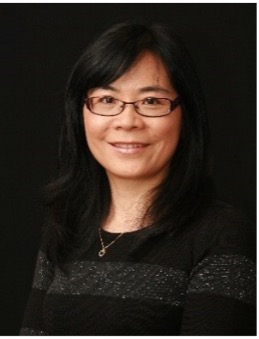 PEIYING ZHU
PEIYING ZHU
Peiying Zhu, Senior Vice President of Wireless Research, is a Huawei Fellow, IEEE Fellow and Fellow of Canadian Academy of Engineering. She is currently leading 6G wireless research and standardization in Huawei. The focus of her research is advanced radio access technologies. She is actively involved in 3GPP and IEEE 802 standards development. Prior to joining Huawei in 2009, Peiying was a Nortel Fellow and Director of Advanced Wireless Access Technology in the Nortel Wireless Technology Lab
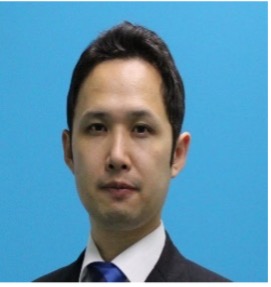 SATOSHI NAGATA
SATOSHI NAGATA
Satoshi Nagata received his B.E. and M.E. degrees from Tokyo Institute of Technology, Tokyo, Japan, in 2001 and 2003, respectively. In 2003, he joined NTT DOCOMO, INC. He worked on the research and development for wireless access technologies for LTE, LTE-Advanced, and 5G. He had contributed to 3GPP over 15 years, and contributed 3GPP TSG-RAN WG1 as a vice chairman during November 2011 to August 2013, and contributed as a chairman during August 2013 to August 2017. He had also contributed 3GPP TSG-RAN as a vice chairman during March 2017 to March 2021, and currently a vice chairman of 3GPP TSG-SA since March 2021
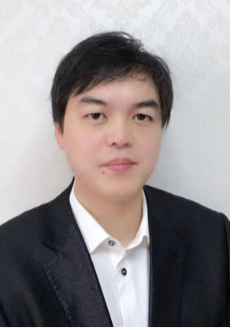 LI TIAN
LI TIAN
Li Tian is currently the Head of Standards Strategy of ZTE Corporation. He is actively involved in various global standardization organizations including 3GPP, ITU, IEEE, where he served as the rapporteur for several 5G related work items. His research interests are in the field of ICT technology, and his team contributed significantly to advanced technologies like radio access, AI/ML, future networks, video coding, automobile electronics, network security, etc. Dr. Tian received his B.Sc degree in 2009 and Ph.D degree in 2015, both in Tongji University, China. From 2013 to 2014, he was a visiting researcher in University of Bologna, Italy. He is the first author of a book and contributed to multiple book chapters, with over 50 academic papers published and over 100 patents held globally. Li served as the co-chair of IWCMC2020 workshop and keynote chair of WCNC2021, he has also delivered multiple keynotes in various academic and industrial events
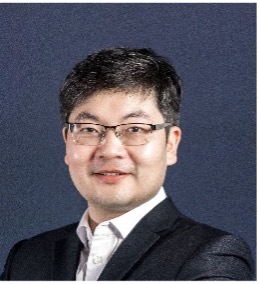 TAO TAO
TAO TAO
Tao Tao is currently Head of Research Department Next Generation Wireless MTC at Nokia Bell Labs China, leading research activities on 5G and 6G network for machine type communications. He received B.Sc degree from Southeast University, China, in 2006, and the Dr.-Ing. degree from the University of Duisburg-Essen, Germany, in 2014. His research interests are mainly in the area of wireless communications, include coexistence mechanism in unlicensed band, positioning, ultra-reliable low latency wireless communication, massive access, and sidelink communication. He was awarded the title of “Pudong Technology Elite” in 2023. He is co-author of a number of scientific publications and of more than 150 patents. He has served as workshop organizers and TPC members of many international conferences.
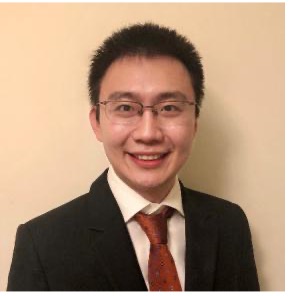 YUANWEI LIU
YUANWEI LIU
Yuanwei Liu is an Associate Professor with the School of Electronic Engineering and Computer Science, Queen Mary University of London. His research interests are NOMA, RIS/STAR, Integrated sensing and communications, Near-Field Communications, and machine learning. Yuanwei Liu is an IEEE Communication Society Distinguished Lecturer and IEEE Vehicular Technology Society Distinguished Lecturer. He received several career awards, including Web of Science Highly Cited Researcher 2021 and 2022, the 2020 IEEE ComSoc Outstanding Young Researcher Award for EMEA, the 2020 Early Achievement Award of the IEEE ComSoc SPCC Technical Committee, the 2020 Early Achievement Award of IEEE CTTC, the 2021 IEEE ComSoc Best Young Professional Outstanding Nominee. He received several best paper awards, he is the co-recipient of IEEE SPCC Best Paper Award, the Best Paper Award in ISWCS 2022 and the Best Student Paper Award in IEEE VTC2022-Fall. He is listed in 35 Innovators Under 35 in China by MIT Technology Review in 2022. Yuanwei Liu is the academic Chair for the Next Generation Multiple Access Emerging Technology Initiative, the vice chair of the IEEE Technical Committee on Cognitive Networks. He serves as an Editor-in-Chief of IEEE ComSoc TC Newsletter, an Area Editor of IEEE Communications Letters, an Editor of the IEEE Transactions on Wireless Communications, the IEEE Transactions on Communications, and the IEEE Transactions on Network Science and Engineering. He serves as the Guest Editor for Proceeding of the IEEE, IEEE JSAC, IEEE JSTSP and IEEE Network. He has served as several Symposium Co-Chairs for IEEE Flag Conferences such as ICC, GLOBECOM, WCNC, TVC, etc. He is the rapporteur of the work item on multi-function RIS in ETSI ISG RIS.
IPA 7: EXPLORE THE BRAIN-LIKE INTELLIGENCE FOR BEYOND 5G
WEDNESDAY, DEC 6 4.00 - 5:30 / LOCATION: Hall 8A
Moderator: Yi Wang, Huawei, Shanghai
Panelists:
- Guangyi Liu, China Mobile Communication Corporation (CMCC), Beijing
- Peiying Zhu, Huawei Canada.
- Wenyu Li, Director of BCI union at CACIT
- Sun Yu, FlectoThink
- Liyan Liang, China Academy of Information and Communications Technology, China
Abstract:
Recent breakthroughs in brain-like intelligence, such as brain-computer interface (BCI) in neurascience, ChatGPT, and AI chipsets, fueled another wave of marchine learning research. The representative technologies include neuromorhipci computing, spiking neural network (SNN), and generative learning etc. Meanwhile, the emerging 5G Advanced and 6G [1], named beyond 5G, are widely studied to build an intelligent digital connected world. A novel trend in nature is to crossly study the two fileds and explore brain-like intelligent technology for beyond 5G. The topic is still in the inital phase of research, several publications [2] [3] have unveils the feasibility of brain type communications. For example, noerumopihic computing and SNN can significantly reduce the computing power and latency in apects of brain signal decoding, vision recognition, auomotive driving, and motion identification etc. These advantages and applications are surely meeting the requirements of beyond 5G so that brain intelligence can be not only connected with each other, but also connnected to robots, machines, cars, and everything-of-internet for the purpose of control and information exchange. In return, the information theory can be applied to neuron science to assisting brain signal decoding and analysis.
The industry preseentation session is to bring together practitioners and researchers from both academia and industry for technial presentations and discussions. Four speakers are invited to present the views and progress in related requirements, techniques, and possible testbeds. Finally, we will have a short Q&A phase to interact between speakers and audience.
Questions:
- What applications and requirements in 6G vision are related to brain neuronscience or intelligence?
- What are the use cases that BCI needs wireless communications?
- What are KPIs for wireless communications to enable commercialization of BCI?
- Predict the top applications and timeline for BCI commercialization?
- Predict the timeline for B5G to support BCI?
Biography:
 YI WANG
YI WANG
Yi Wang [SM’11] is currently a research expert at Huawei Technologies Co., Ltd. in Shanghai. He received the M.S.E.E and Ph.D degrees in information engineering department from Beijing University of Posts & Telecommunications, China, in 1997 and 2000 respectively. He was one of the initial researchers of FuTURE program in 863 when he worked in Tsinghua University during 2000-2002. He visited the University of Kiel in Germany as senior researcher. Since 2005 he joined Huawei Technologies Co., Ltd. in Shanghai, he led a series of research projects on LTE/LTE-Advanced and 5G researches. Currently he is leading 5G-A New Radio Technology in Huawei. Dr. Yi Wang published over 300 patents and 90+ papers. Many patents have been realized in LTE/LTE-Advanced and 5G products and adopted in 3GPP and IEEE802.11 standards. Dr. Yi Wang is the vice chair of IEEE chapter in Shanghai. He was the chair of China IMT-2020 (5G) mmWave Technology during 2013~2017. He is the board member of NYU Wireless Industrial Affiliates during 2014~2017. He was the vice chair of WWRF WG4 during 2008-2010.
 GUANGYI LIU
GUANGYI LIU
Guangyi Liu, received his PhD. from Beijing University of Posts and Telecommunications in 2006. He joined China Mobile since 2006, now he is the Chief Scientist of 6G at China Mobile Group and lead the 6G R&D. He led the standardization and industrialization of 4G and 5G in China mobile from 2007 to 2019. He is the TSC member and TG2 chair of 6G Alliance of Network AI (6GANA), which organize the study on network AI, build the consensus on network AI and promote the ubiquitous intelligence towards 2030. He is the vice chair of the wireless technology group in Chinese IMT-2030 promotion group, Emerging technology committee of IEEE ComSoc and associate technical editor of IEEE Communication Magazine, vice chair of THz and mm-wave industry alliance in China. He is also a pioneer of sub 6GHz 5G standalone network industrialization and commercialization and has acted as the chair of spectrum working group and coordinator of 5G eMBB program in Global TD-LTE Initiative (GTI). He has been granted more than 150 patents, and authored and coauthored more than 8 books and published more than 150 papers.
 PEIYING ZHU
PEIYING ZHU
Peiying Zhu, Senior Vice President of Wireless Research, is a Huawei Fellow, IEEE Fellow and Fellow of Canadian Academy of Engineering. She is currently leading 6G wireless research and standardization in Huawei. The focus of her research is advanced radio access technologies. She is actively involved in 3GPP and IEEE 802 standards development. She has been regularly giving talks and panel discussions on 5G/6G vision and enabling technologies. She led the team to contribute significantly to 5G technologies and standardization. Many technologies developed by the team have been adopted into 5G standards and implemented in 5G products. She served as the guest editor for IEEE Signal processing magazine special issue on the 5G revolution and IEEE JSAC on Deployment Issues and Performance Challenges for 5G. Prior to joining Huawei in 2009, Peiying was a Nortel Fellow and Director of Advanced Wireless Access Technology in the Nortel Wireless Technology Lab. She led the team and pioneered research and prototyping on MIMO-OFDM and Multi-hop relay, which were adopted into LTE standards and 4G products. Dr. Zhu has more than 200 granted patents.
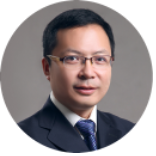 WENYU LI
WENYU LI
Wenyu Li, Professor-level Senior Engineer, Director of China Academy of Information and Communications Technology Intellectual Property and Innovation Development Center, Secretary-General of Brain-Computer Interface Industry Alliance, Doctor of Engineering in Signal and Information Processing, Beijing University of Posts and Telecommunications. He has long been engaged in research on core technologies and standards for signal and information processing, communications and brain-computer interaction, industrial innovation and development, and intellectual property protection. He has led and completed more than 10 major national science and technology projects, key R&D plans, national science and technology support plans, and provincial and ministerial scientific research projects. Presided over or responsible for completing more than 30 technical standards in the communications industry, published 2 academic monographs, published more than 40 academic papers, won more than 10 national invention patents, won one special prize and one second prize of the National Science and Technology Progress Award, and many provincial and ministerial awards.
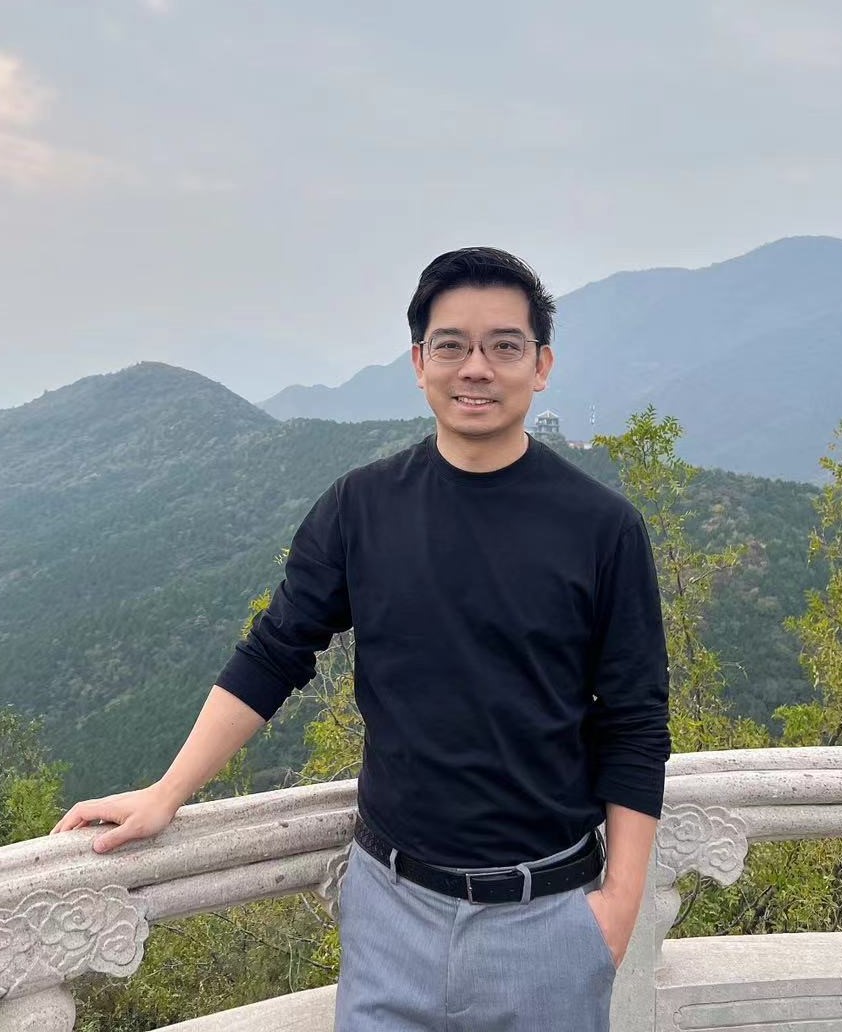 SUN YU
SUN YU
Sun Yu is the Founder & CEO of FlectoThink, a leading brain-computer interface company in China and USA. He obtained his bachelor’s degree from Zhejiang University, one of the best universities in China, his Master's from Rutgers University- New Brunswick, USA, and his Ph.D. from the University of Akron Ohio, USA, from Polymer Science department, which ranks first in the USA. Dr. Sun is the author of the best-selling brain-computer interface book "The Third Layer of the Brain", the main lecturer for the "Brain-Computer Interface of Frontier Technology" on the well-known "Dedao App". He is a nano material scientist, listed on Forbs Global Outstanding Chinese Elites 2023,Hurun's Outstanding Innovators in the USA 2021, 36Kr's Global Chinese Elite Power 100 in 2022. He is a 2022 fellow of GASA Academy, a top tier organization comprised of entrepreneur and investors..
 LIANG LIYAN
LIANG LIYAN
Liang Liyan, Ph.D. graduated from the Department of Biomedical Engineering at Tsinghua University in 2022, and currently serves as a research engineer at China Academy of Information and Communications Technology. He has been engaged in research on technologies and standards related to brain-computer interfaces, biomedical signal processing, and industrial innovation and development for a long time. He has participated in multiple national key research development programs and projects funded by the National Natural Science Foundation of China, and has completed 5 research projects on brain-computer interfaces at the China Academy of Information and Communications Technology. He has published 10 academic papers in journals such as JNE, TBME, and Sensors, and has obtained 1 national invention patent. He led the development of two industry and group standards in the field of brain-computer interfaces, and has conducted multiple tests and verifications of brain-computer interface products.
IPA 8: 6G NETWORKS: A EUROPEAN PERSPECTIVE TOWARDS A GLOBAL STANDARD
THURSDAY, DEC 7 8.30 - 10:00 / LOCATION: Hall 8B
Moderator: Colin Willcock, NSN, 6G-IA GB Chairman
Panelists:
- Mikko Uusitalo, Nokia Bell Labs
- Diego Lopez, Telefonica, ETSI Fellow, chair of ETSI ISG ZSM and ETSI NFV NOC
- Frank Fitzek, TU Dresden, Germany
- Christos Verikoukis, Athena Research Centre & University of Patras
- Marja Matinmikko-Blue, University of Oulu, Finland
Abstract:
The European Commission (EC) and the European Industry (6G-IA) have joined forces under the Smart Networks and Services Joint Undertaking (SNS JU) to facilitate and develop industrial leadership for Europe in 6G networks through a new research program investing at least 1.8 B€ in Research & Innovation (R&I) activities until 2030. The first wave of 35 R&I projects (Phase 1) have already commenced operations in January 2023 addressing Smart Communication Components, Systems and Networks, Revolutionary Technology Advancement Towards 6G, Experimental Infrastructures and Large-Scale Trials and Pilots.
This panel, which is co-organized by the 6G-IA and the European 6G Flagship project Hexa-X-II, will attempt to get a better understanding of the EU 6G research directions in terms of solutions and priorities. It will provide insights regarding the expected impact of this research, by giving the floor to key experts involved in the SNS JU Phase 1 projects. Through an interactive discussion the EU experts will offer their view on the latest technological trends/enablers, their role in 6G development, the key timelines for 6G and the expected impact of their work. The panel will also discuss the role and impact of 6G standardization and the added-value offered by collaborative R&I programs such as the SNS JU, for the development of new networks and services.
Questions:
- What are the key impacts you expect on 6G from your project(s)? What will the impact on Sustainability be?
- What are the key timelines with regards to 6G development, validation and deployment?
- How will you influence 6G standardization?
- Which technological enablers (e.g., AI, Cloud nativeness, comms & sensing co-design, optical comms, RIS, etc.) do you consider as the most critical for the success of 6G
- What are the key advantages (why is it worth investing) of such collaborative activities such as 6GSNS?
Biography:
 COLIN WILLCOCK
COLIN WILLCOCK
Colin Willcock is currently the chairman of the 6G Smart Networks and Services Industry Association (6G-IA) governing board (formally known as 5G Infrastructure Association). He is also the chairman of the European Smart Networks and Services Joint undertaking (SNS-JU) governing board. He has detailed knowledge and experience of the telecommunications industry having worked directly or indirectly with many of the major players over a 30-year period. The roles have included software developer, technical consultant, technical marketing, standardization and management. In addition to line manager roles, he has participated extensively in standardization activities at ETSI, ITU-T and 3GPP, including instrumental work in creating and developing the TTCN-3 testing language. Colin has also been very active in the European research ecosystem, including leading a number of award winning European projects such as TT-Medal, D-MINT and SEMAFOUR. Colin is currently head of Research Alliances at Nokia, while he has extensive experience in the organization and moderation of highly impactful workshops, panels and events with key 5G/6G experts.
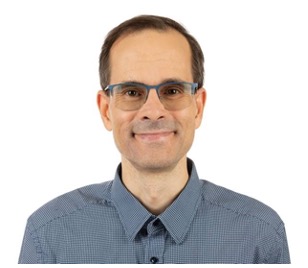 MIKKO UUSITALO
MIKKO UUSITALO
Mikko Uusitalo is Head of Research Department Radio Systems Research Finland at Nokia Bell Labs. Mikko is leading the European 6G Flagship projects Hexa-X and Hexa-X-II. He obtained a M.Sc. (Eng.) and Dr.Tech. in 1993 and 1997 and a B.Sc. (Economics) in 2003, all from predecessors of Aalto University. Mikko has been at Nokia since 2000 with various roles, including Principal Researcher and Head of International Cooperation at Nokia Research. Mikko is a founding member of the CELTIC EUREKA and WWRF, the latter one he chaired for 2004-2006. Mikko is a WWRF Fellow.
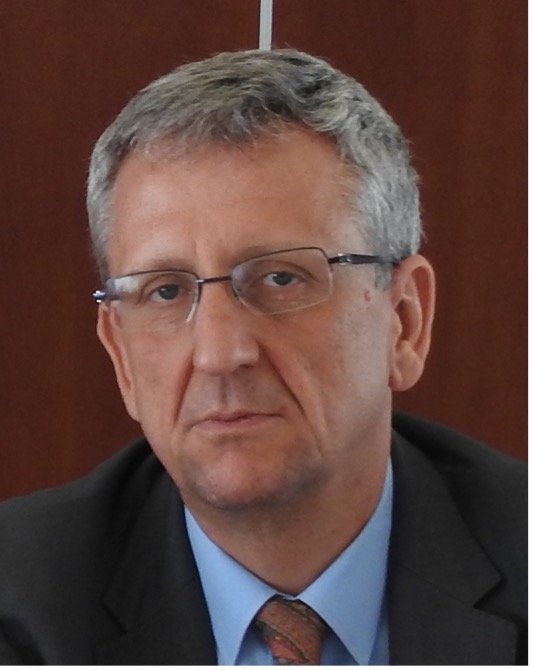 DIEGO R. LOPEZ
DIEGO R. LOPEZ
Diego R. Lopez joined Telefonica I+D in 2011 as a Senior Technology Expert and is currently in charge of the Technology Exploration activities within the GCTIO Unit. Before joining Telefónica he spent some years in the academic sector, dedicated to research on network services, and was appointed member of the High-Level Expert Group on Scientific Data Infrastructures by the European Commission. Diego is currently focused on applied research in network infrastructures, with a special emphasis on virtualization, data-driven management, new architectures, security, and quantum communications. Diego is an ETSI Fellow and chairs the ETSI ISGs ZSM (on network automation) and the NOC of ETSI ISG NFV.
 FRANK FITZEK
FRANK FITZEK
Frank Fitzek is a Professor and head of the “Deutsche Telekom Chair of Communication Networks” at TU Dresden. He is the spokesman of the DFG Cluster of Excellence CeTI and coordinates the5G Lab Germany as well as one of the four Germany 6G hubs 6Glife, which is funded by the BMBF and carried out together with the Technical University of Munich. His current research interests are in the areas of Tactile Internet, In-Network Computing, Quantum and Molecular Communication, Mobile and Wireless Mesh Communication, Post-Shannon Theory, Network Coding as well as Robotics and the Metaverse
 CHRISTOS VERIKOUKIS
CHRISTOS VERIKOUKIS
Christos Verikoukis is a collaborating Faculty member with ATHENA/ISI and Associate Professor, Tenure Track at CEID in University of Patras. He received his PhD from the Technical University of Catalonia (UPC) in 2000. Dr. Christos h-index is 47 and his publications achieved a total of 9500 citations. He has published more 156 journal papers and over 220 conference papers. He is also the co-author of 4 books, 20 chapters of different books and of 5 patents. Since 2004, he has supervised 25 Ph.D. students (18 PhD graduations) and 10 Post Docs researchers. He received the best paper award of the Communication QoS, Reliability & Modelling Symposium (CQRM) symposium in the IEEE ICC 201, ICC 2014 & ICC2020, of the Selected Areas in Communications Symposium in the IEEE GLOBECOM 2015, of the EUCNC 2016 conference, the EURASIP 2013 Best Paper Award for the Journal on Advances in Signal Processing and the Best Demo Award in IEEE CAMAD2018 and the 1st prize in the IEEE ComSoc Student Competition (as a Mentor) 2015. He has delivered 14 tutorials in prestigious conferences such as IEEE ICC, IEEE Globecom and IEEE WCNC and more than 30 invited talks. Dr. Verikoukis has participated in more than 40 competitive projects while he has served as the Principal investigator in national projects in Greece and in Spain. Prof. Christos Verikoukis is currently coordinating two research Projects on 6G under by the SNS-JU, while he served as the Project coordinator of other 4 projects in the beyond 5G and 6G area. His research expertise focuses in AI-aided 5G/6G networks, Network slicing, Resource Management, Network Virtualization, Zero-Touch networks, cloud continuum.
 MARJA MATINMIKKO-BLUE
MARJA MATINMIKKO-BLUE
Marja Matinmikko-Blue is Research Director of the Infotech Oulu Institute and Director of Sustainability & Regulation at 6G Flagship at the University of Oulu, Finland, where she also holds an Adjunct Professor position in spectrum management. She completed her Doctor of Science degree in communications engineering in 2012, and Doctor of Philosophy degree in industrial engineering and management in 2018 at the University of Oulu. She has been conducting multi-disciplinary research into the technical, business, and regulatory aspects of future mobile communication systems in close collaboration with industry, academia, and regulators for over two decades. She coordinated the preparation of twelve 6G White Papers in 6G Flagship. She has published 180+ scientific papers and prepared 160+ contributions to regulatory bodies.
IPA 9: UNLOCKING THE POWER OF RECONFIGURABLE INTELLIGENT SURFACES AND HOLOGRAPHIC ANTENNAS: EXPLORING DESIGN, USE-CASES, DEPLOYMENT, AND NETWORK OPPORTUNITIES
THURSDAY, DEC 7 2.00 - 3:30 / LOCATION: Hall 8A
Moderator: Youssef Nasser, Greenerwave
Panelists:
Merouane Debbah, Khalifa University, and TII, UAE
Tony Quek, SUTD
Arman Shojaeifard, Interdigital, UK
Heinz Mellein, Rodhe &Schwarz (R&S)
Malte Schellmann, Huawei Munich Research Center
Abstract:
Motivation: The rapid advancement of wireless communication technologies has transformed the way we connect and communicate. In this context, Reconfigurable Intelligent Surfaces (RIS) and Holographic Antennas have emerged as groundbreaking solutions, offering tremendous potential for revolutionizing wireless communication.
Background: Reconfigurable Intelligent Surfaces, also known as intelligent reflecting surfaces or software-defined metasurfaces, are artificially engineered structures composed of a large number of tiny passive elements. These elements can be electronically controlled to manipulate the electromagnetic waves passing through them. RIS can effectively shape and control the propagation of wireless signals, enabling improved signal quality, enhanced coverage, and increased network capacity.
Holographic Antennas, on the other hand, leverage holography principles to create complex electromagnetic wavefronts. By manipulating the phase and amplitude of the radiated signals, holographic antennas can generate highly focused beams with unprecedented control and precision.
Design: The design aspect of RIS and holographic antennas encompasses a wide range of considerations. Engineers and researchers are continuously exploring innovative methods to optimize the structure, material composition, and element density of RIS. Similarly, in holographic antennas, the design involves the intricate arrangement of antenna elements to generate desired beam patterns and characteristics.
Use-Cases: The potential use-cases for RIS and holographic antennas are vast, spanning multiple industries and sectors. This includes Wireless Communication, Smart Buildings, 5G Network Optimization, Intelligent Transportation Systems, etc.
Objective: The target of this panel is to leverage RIS and holographic antennas capabilities to enhance wireless connectivity, improved user experiences, and innovative services. Additionally, the panel will discuss the design, the use-cases and the integration of these technologies into new 3GPP releases and hence embrace novel business models, partnerships, and ecosystem development in the wireless communication industry. The panel will finally tackle the needs for Investments in infrastructure, research, and standardization to unlock the full potential of these technologies.
Questions:
- What is the status of research, design and deployment of RIS and holographic antennas for 5G and beyond?
- What are the main use-cases that these technologies could have in a deployment activity and which challenges are they overcoming in such use-cases?
- What new applications can be enabled by these two technologies? And what is their impact on the vendors and MNO business?
- What is the standardization status on these technologies and what standardisation impacts are expected to be seen and when?
- Is there any PoC, pilot project or major deployment that has been successfully done? What are the obtained results?
Biography:
 YOUSSEF NASSER
YOUSSEF NASSER
Youssef Nasser obtained his executive MBA from the prestigiousESCP Business School in Paris, in 2022, and his PhD in wirelesscommunications in 2006 from National Polytechnic Institute ofGrenoble.He is currently the Director of 5G/6G Business Unit withGreenerwave, a French startup developing reconfigurable intelligentsurfaces, smart and holographic antennas.Youssef is a Senior Executive with over twenty years’ experience inthe Telecom world, shared between academia and industry includingmajor industrial groups. Longwise, his motivation and passion fortechnology have led him into the entrepreneurship world through astartup on spectrum management.Along his career, he has successfully led major R&D and industrialprojects in the telecom industry including but not limited to 4G, 5G,DVB. Some of these projects have received gold and silver awardsfrom the European Commission for their achievements. He hasdeployed several technological solutions in telecom sector andactively contributed to several telecom standards. He has chairedseveral industry associations and technology developmentconferences. He published over 130 articles in internationallyrenowned journals and conferences.His areas of interest aremobilecommunications systems,spectrum management, telecomstrategies
 MÉROUANE DEBBAH
MÉROUANE DEBBAH
Mérouane Debbah is Professor at Khalifa University of Science and Technology in Abu Dhabi. He received the M.Sc. and Ph.D. degrees from the Ecole Normale Supérieure Paris-Saclay, France. He was with Motorola Labs, Saclay, France, from 1999 to 2002, and then with the Vienna Research Center for Telecommunications, Vienna, Austria, until 2003. From 2003 to 2007, he was an Assistant Professor with the Mobile Communications Department, Institut Eurecom, Sophia Antipolis, France. Since 2007, he is Full Professor at CentraleSupelec, Gif-sur-Yvette, France. From 2007 to 2014, he was the Director of the Alcatel-Lucent Chair on Flexible Radio. From 2014 to 2021, he was Vice-President of the Huawei France Research Center. He was jointly the director of the Mathematical and Algorithmic Sciences Lab as well as the director of the Lagrange Mathematical and Computing Research Center. From 2021 to 2023, he was Chief Researcher at the Technology Innovation Institute and leading the AI & Digital Science Research centers at the Technology Innovation Institute. He was also Adjunct Professor with the Department of Machine Learning at the Mohamed Bin Zayed University of Artificial Intelligence in Abu Dhabi. Since 2023, he is a Professor at at Khalifa University of Science and Technology in Abu Dhabi and founding director of the 6G center. He has managed 8 EU projects and more than 24 national and international projects. His research interests lie in fundamental mathematics, algorithms, statistics, information, and communication sciences research. He holds more than 40 patents. He is an IEEE Fellow, a WWRF Fellow, a Eurasip Fellow, an AAIA Fellow, an Institut Louis Bachelier Fellow and a Membre émérite SEE. He was a recipient of the ERC Grant MORE (Advanced Mathematical Tools for Complex Network Engineering) from 2012 to 2017. He was a recipient of the Mario Boella Award in 2005, the IEEE Glavieux Prize Award in 2011, the Qualcomm Innovation Prize Award in 2012, the 2019 IEEE Radio Communications Committee Technical Recognition Award and the 2020 SEE Blondel Medal. He received more than 30 best paper awards, among which the 2007 IEEE GLOBECOM Best Paper Award, the Wi-Opt 2009 Best Paper Award, the 2010 Newcom++ Best Paper Award, the WUN CogCom Best Paper 2012 and 2013 Award, the 2014 WCNC Best Paper Award, the 2015 ICC Best Paper Award, the 2015 IEEE Communications Society Leonard G. Abraham Prize, the 2015 IEEE Communications Society Fred W. Ellersick Prize, the 2016 IEEE Communications Society Best Tutorial Paper Award, the 2016 European Wireless Best Paper Award, the 2017 Eurasip Best Paper Award, the 2018 IEEE Marconi Prize Paper Award, the 2019 IEEE Communications Society Young Author Best Paper Award, the 2021 Eurasip Best Paper Award, the 2021 IEEE Marconi Prize Paper Award, the 2022 IEEE Communications Society Outstanding Paper Award, the 2022 ICC Best paper Award, the 2022 IEEE GLOBECOM Best Paper Award, 2022 IEEE TAOS TC Best GCSN Paper Award, the 2022 IEEE International Conference on Metaverse Best Paper Award, the 2023 IEEE Communications Society Fred W. Ellersick Prize, the 2023 ICC best paper award as well as the Valuetools 2007, Valuetools 2008, CrownCom 2009, Valuetools 2012, SAM 2014, and 2017 IEEE Sweden VT-COM-IT Joint Chapter best student paper awards. He is an Associate Editor-in-Chief of the journal Random Matrix: Theory and Applications. He was an Associate Area Editor and Senior Area Editor of the IEEE TRANSACTIONS ON SIGNAL PROCESSING from 2011 to 2013 and from 2013 to 2014, respectively. From 2021 to 2022, he served as an IEEE Signal Processing Society Distinguished Industry Speaker.
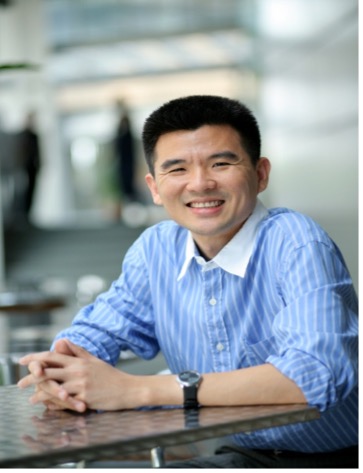 TONY Q.S. QUEK
TONY Q.S. QUEK
Tony Q.S. Quek received the B.E. and M.E. degrees in Electrical and Electronics Engineering from Tokyo Institute of Technology, respectively. At Massachusetts Institute of Technology, he earned the Ph.D. in Electrical Engineering and Computer Science. Currently, he is the Cheng Tsang Man Chair Professor with Singapore University of Technology and Design (SUTD) and ST Engineering Distinguished Professor. He also serves as the Head of ISTD Pillar, Director for Future Communications R&D Programme, Sector Lead for SUTD AI Program, and the Deputy Director of SUTD-ZJU IDEA. His current research topics include wireless communications and networking, 6G, network intelligence, non-terrestrial networks, and open radio access network. Dr. Quek has been actively involved in organizing and chairing sessions and has served as a TPC member in numerous international conferences. He is currently serving as an Area Editor for the IEEE Transactions on Wireless Communications. He was an Executive Editorial Committee Member of the IEEE Transactions on Wireless Communications, an Editor of the IEEE Transactions on Communications, and an Editor of the IEEE Wireless Communications Letters. Dr. Quek received the 2008 Philip Yeo Prize for Outstanding Achievement in Research, the 2012 IEEE William R. Bennett Prize, the 2016 IEEE Signal Processing Society Young Author Best Paper Award, the 2017 CTTC Early Achievement Award, the 2017 IEEE ComSoc AP Outstanding Paper Award, the 2020 IEEE Communications Society Young Author Best Paper Award, the 2020 IEEE Stephen O. Rice Prize, the 2020 Nokia Visiting Professorship, and the the 2022 IEEE Signal Processing Society Best Paper Award. He is a Fellow of IEEE and a Fellow of the Academy of Engineering Singapore
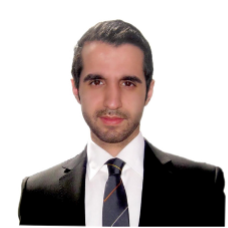 ARMAN SHOJAEIFARD
ARMAN SHOJAEIFARD
Arman Shojaeifard has extensive experience in research, development, and standardization of radio transmission technologies, protocols, and architectures. He is currently a Senior Manager at InterDigital, responsible for the Radio Interface R&D at the Wireless Lab Europe. He also serves as the Chair of the ETSI Industry Specification Group on Reconfigurable Intelligent Surfaces (ISG RIS). He was the Technical Manager of the Innovate-UK/CELTIC-NEXT European collaborative R&D project on AIMM (AI-enabled Massive MIMO) between 2018-2022. Prior to InterDigital, he was a Principal Researcher and 3GPP RAN1 WG Delegate at British Telecommunications. He received his PhD degree in Wireless Communications from King’s College London in 2012
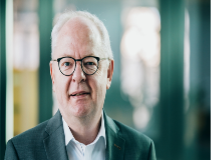 HEINZ MELLEIN
HEINZ MELLEIN
Heinz Mellein is a technology manager for wireless communications with Rohde & Schwarz (R&S) Munich, Germany. In this role he is evaluating new radio technologies and markets with respect to their test & measurement needs. He also represents the company at various industry organizations responsible for wireless communication standards such as 3GPP, ETSI MSG TFES, ETSI ISG RIS and REDCA. Heinz joined R&S in 1990 and has been involved in mobile radio communication testing ever since. He was member of the startup team that designed and developed the very first GSM system simulator for type approval purposes, and subsequently project manager and technology trainer for GSM, UMTS, WiMAX and LTE. He is also co-author of a comprehensive book covering test & measurement for UMTS. Heinz holds multiple patents int the area of cellular radio testing. Back in 1989 he received his diploma in communications engineering at the Technical University of Karlsruhe, Germany.
 MALTE SCHELLMANN
MALTE SCHELLMANN
Malte Schellmann received the Dipl.-Ing. (M.S.) degree in electrical engineering and information technology from Technische Universität München, Germany, in 2003, and the Dr.-Ing. (Ph.D.) degree from Technische Universität Berlin, Germany, in 2009. From 2004 – 2009, he was with Fraunhofer Heinrich Hertz Institute, Berlin, working on practical aspects of MIMO communications. He is currently a Principal Research Engineer at Huawei Munich Research Center, Germany. His research addresses radio access technologies for Beyond 5G and 6G, with particular focus on ultra-reliable low latency communications for vehicles (V2X) and the industrial Internet of Things (IIoT). He has been actively involved in numerous national and European research projects, among those the 4G flagship projects WINNER, WINNER II and WINNER+ as well as the 5G flagship project METIS, and further the 5G-PPP projects METIS II, FANTASTIC-5G and 5G-CAR. .
IPA 10: THE NEED FOR SMART SOLUTIONS EMPOWERED BY SENSING, AI/ML, 5G AND BEYOND
THURSDAY, DEC 7 2.00 - 3:30 / LOCATION: Hall 8B
Moderator: Fawzi Behmann, TelNet Management consulting Inc., Texas, USA
Panelists:
- Prof. Semih Aslan, Ingram School of Engineering , Texas State University, Texas
- Prof. Marcelo M. Carvalho, University of Bras´ılia (UnB), Brazil
- Narendra Narendra Mangra, GlobeNet
- Dr. Ashutosh Dutta, JHU/APL
Abstract:
With the rapid deployment of 5G networks and the maturity of 5G handsets, more and more new applications keep emerging in the market, which definitely triggers an explosion of mobile data traffic. It is projected that the data of usage (DoU) of an individual user per month will reach 150 GB by 2025 from 10 GB in 2020 at a compound annual growth rate (CAGR) of 65%. In addition to traditional data service, AV/VR will become popular and contribute DoU largely beyond 2025.
XR is likely to become the next computing platform. It will transform how we interact with the world around us every day, delivering unprecedented new experiences and exponentially increased productivity. XR is inherently meant to be mobile, intuitive, immersive, and always connected. However, technology advancements in low-power sensor processing, AI, and connectivity are required to enable the broad adoption of XR.
Following 5G that is connecting IoT, 6G would connect Intelligence, that is, to bring about top-notch intelligence to ending users and to exploit distributed intelligence resources in an optimal way.
With integrated sensing capability, 6G will be no longer just a platform that connects everything. It will be an intelligent platform that offers both integrated sensing and communications (ISAC) and integrated computing and communications. This platform will provide intelligent services and applications for industries to create greater social value.
There is a clear sense that AI can be a disruptive enabler to build a more agile and efficient future network. There's a great gap between the current intelligence level of the network and our expectations for it. Hence this panel is proposed to discuss the challenges and opportunities that we may face in "AI for 5G and beyond" exploration.
Questions:
- Is AI/ML fully exploited?
- What impact would the advancement of Edge computing and edge intelligence have on the network?
- What are some of the applications enabled by 5G and AI and how they are transformed in 6G?
- What ecosystem pieces needed to accelerate XR adoption?
- Has network slicing deployed and delivering QoS?
- What are the benefits of smart networking solution?
- What are the security implications on the network edge moving from 5G to 6G?
Biography:
 FAWZI BEHMANN
FAWZI BEHMANN
Fawzi is the founder and president of TelNet Management Consulting Inc., offering professional services in technology trends; positioning and building smart networking ecosystem solutions in key markets. Prior, Fawzi held various executive and leadership positions with Tier 1 companies in the areas of communications and networking in Canada and US. He championed the development of Telecom Network Management systems, led efforts in rolling out product releases for network edge and core and marketing SoC product line and roadmap. Fawzi is also a distinguished Lecturer and keynote speaker at national and international conferences, and has several publications, including co-authoring the book on Collaborative Internet of Things. He is the Co-founder of the "IoT in Healthcare Consortium" of Intelligent Health Association and serves as a faculty advisor at Texas State school of Engineering Capstone Senior Design program. As a senior member and volunteer with IEEE, Fawzi is serving as the North America Director for Communications Society and BOG member. He is a voting member of IEEE Conference Committee, FNTC SC Chair elect, Co-Chair of Future Network Education working group, Co-Chair of IEEE Transdisciplinary Framework working group and contributor to Future Network Roadmap’s security, applications & services working groups. Fawzi chaired several conferences, summits, and panels. Among the most recent is the General Chair of IEEE WCNC 2022. Among other positions held, Fawzi was the IEEE Region 5 Conference Committee Chair, IEEE Central Texas Section Chair and chair of multiple joint chapters in Communications, Signal Processing, Computer, EMBS and Consumer Technology. Fawzi has received multiple awards for his professional leadership, including the IEEE USA professional leadership award, IEEE Communications Society NAB Exceptional Service Award, and IEEE ComSoc Chapter of the Year and Chapter Achievement Awards, among others. Fawzi has MBA, master’s in computer science, bachelor’s in science with Honors in Mathematics with Distinction.
 SEMIH ASLAN
SEMIH ASLAN
Semih Aslan is an Associate Professor of Electrical Engineering at Texas State University, where he joined in 2011. He previously worked as a Senior FPGA Design Engineer with Motorola and full-time instructor at ITT Technical Institute. At ITT Technical Institute, Dr. Aslan worked with minority students as a full-time instructor and assistant dean for over 10 years on the west side of Chicago. Dr. Aslan is the founding director of the System Modeling and Green Technology (SMART) Lab in the Ingram School of Engineering at Texas State. He currently advises graduate and undergraduate senior students on green energy, multi-processor system design and data analysis projects and has numerous publications.
https://faculty.txst.edu/profile/1922487
 MARCELO M. CARVALHO
MARCELO M. CARVALHO
Marcelo M. Carvalho received his Ph.D. degree in Computer Engineering from the University of California Santa Cruz (UCSC) (2006), the M.Sc. degree in Electrical and Computer Engineering from the University of California Santa Barbara (UCSB) (2003), the M.Sc. degree in Electrical Engineering from the State University of Campinas (Unicamp) (1998), and the B.Sc. degree in Electrical Engineering from the Federal University of Pernambuco (UFPE) (1995). Currently, he is an Associate Professor in the Department of Electrical Engineering at the University of Brasília (UnB), where he is a member of the Graduate Program in Electrical Engineering (PPGEE). He is the co-recipient of Best Paper Awards at 2022 WebMedia and 2018 IFIP/IEEE Wireless Days, and author of a Best Paper Candidate at ICCCN 2004. He served as Area Co-Chair of Hot Topics in Networking of ICCCN 2020, Program Co-Chair of IEEE MASS 2019, General Co-Chair of IEEE MASS 2016, and General Co-Chair of IEEE CARTOON 2014. He is an active member of many technical program committees of IEEE/ACM conferences, and has served as a reviewer to many journals. In 2010, he was recognized as an Exemplary Reviewer of IEEE Communications Letters. He supervised undergraduate teams who were the 2nd runner-up for the 2021 IEEE Signal Processing Cup Student Competitionand won the Strategy Award at MANIAC Challenge 2013. Dr. Carvalho has worked as a Visiting Research Scholar at the University of Texas at Dallas (2018-2019), and at Trinity College Dublin (2012). His research interests are in the fields of wireless and mobile networking, Internet of Things, and multimedia communications. He is a member of the IEEE and ACM societies.
 NARENDRA MANGRA
NARENDRA MANGRA
Narendra Mangra is the Principal at GlobeNet LLC, where he provides provides advisory and consulting services across industry, government, and academia. His diverse experience spans strategy development, smart city roadmap development, spectrum management, mobile network planning and system deployments, enterprise-wide modernization, program management, and education. He teaches graduate courses on 5G and project management with a focus on smart cities at the George Mason University. Narendra also leads several IEEE initiatives on technology roadmap development, smart cities architecture standards development, and industry connections on telehealth and the transdisciplinary framework with a focus on agriculture. These initiatives aim to systematically extend the reach and depth of agriculture, public safety, telehealth, smart cities, and rural development using a transdisciplinary approach that integrate ecosystems, networks, and governance functions. His current interests include comprehensive transdisciplinary frameworks, 5G and future networks, digital transformation, smart communities, and related ecosystems.
 ASHUTOSH DUTTA
ASHUTOSH DUTTA
Ashutosh Dutta is currently Chief 5G Strategist and JHU/APL Sabbatical Fellow at Johns Hopkins University Applied Physics Labs (JHU/APL), USA. He also serves as Chair for Electrical and Computer Engineering for Engineering Professional Program at JHU. His career, spanning more than 30 years, includes Director of Technology Security and Lead Member of Technical Staff at AT&T, CTO of Wireless at a Cybersecurity company NIKSUN, Inc., Senior Scientist in Telcordia Research, Director of Central Research Facility at Columbia University, adjunct faculty at NJIT, and Computer Engineer with TATA Motors. Ashutosh is author of more than 100 technical papers and 31 issued patents. Ashutosh is co-author of the book, titled, “Mobility Protocols and Handover Optimization: Design, Evaluation and Application” published by IEEE and John & Wiley. As a Technical Leader in 5G and security, Ashutosh has been serving as the founding Co-Chair for the IEEE Future Networks Initiative that focuses on 5G standardization, education, publications, testbed, and roadmap activities. Ashutosh is IEEE Communications Society's Distinguished Lecturer for 2017-2020 and as an ACM Distinguished Speaker (2020-2022). Ashutosh currently serves as the founding co-chair for IEEE Future Networks Initiative and Member-At-Large for IEEE Communications Society. He co-founded the IEEE STEM conference (ISEC) and helped to implement EPICS (Engineering Projects in Community Service) projects in several high schools. Ashutosh has served as the general Co-Chair for the IEEE STEM conference for the last 10 years. Ashutosh served as the Director of Industry Outreach for IEEE Communications Society from 2014-2019. He was recipient of 2009 IEEE MGA Leadership award and 2010 IEEE-USA professional leadership award. Ashutosh currently serves as Member-At-Large for IEEE Communications Society for 2020-2022. Ashutosh has served as the general Co-Chair for the premier IEEE 5G World Forums and has organized 73 5G World Summits around the world. Ashutosh currently serves as the Chair for IEEE Industry Connection’s O-RAN activities. Ashutosh is a Distinguished Alumnus of NIT Rourkela with BS in Electrical Engineering, MS in Computer Science from NJIT, and Ph.D. in Electrical Engineering from Columbia University under the supervision of Prof. Henning Schulzrinne. Ashutosh is a Fellow of IEEE and Distinguished member ACM.
IPA 11: ACCELERATING SUSTAINABLE DEVELOPMENT GOALS WITH IoT INNOVATION
THURSDAY, DEC 7 4.00 - 5:30 / LOCATION: Hall 8A
Moderator: Mona Jaber, QMUL, UK
Panelists:
- Maike Luiken, Chair of Planet Positive 2030
- Nordin Bin Ramli, MIMOS Berhad, Chair of IEEE Malaysia Section, Adj Professor, FTKKI UMT
- Che Zalina Binti Zulkifli, Universiti Pendidikan Sultan Idris (UPSI), Malaysia
- Fabio Patrone, University of Genoa, Italy
- Fatimah Ibrahim, Universiti Malaya, Malaysia
Abstract:
The United Nations drafted an agenda for 2030 to achieve sustainable development with well-defined goals (SDG) which are an urgent call for action requiring collaboration and innovation across countries and organisations. The year 2023 marks the midpoint toward fulfilling the proposed agenda but the world is still behind in attaining any of the set goals. The intersection of the Internet of Things (IoT) and artificial intelligence (AI) is a promising direction for accelerating the progress towards SDGs through digital transformation that is scalable and affordable to reach areas in dire need of support. This panel will discuss the opportunities offered by the rise of IoT and advances in AI in ushering in these goals. The panel will also expose the challenges that emerge from applying these technologies in the realisation of SDGs with underlined risks related to bias, security, data privacy, and the multi-objective optimisation of often competing SDGs. The topic is of timely importance and aligned with the theme of the Globecom 2023. Gender equality (SDG 5) and reduced inequality (SDG 10) are two of the 17 defined goals but are pivotal to the success of the remaining goals. It follows that discussing the role of IoT/AI in accelerating SDGs needs to be carried by a diverse and inclusive panel to cover the ambit of both challenges and opportunities. To this end, the proposer, in her capacity as steering committee of IEEE WIE UK&I affinity group and in collaboration with IEEE WIE Malaysia affinity group, is well positioned to draw a panel of diverse experts to unmask the reality of IoT/AI as SDG enablers.
Questions:
- What could IoT/AI offer in solving SDGs that is not possible otherwise?
- Which SDGs and which geographical areas benefit most from IoT/AI?
- Which IoT connectivity technologies are the most suitable in the case of SDGs? Do these differ for different SDGs or different geographical areas?
- What are the biggest challenges in the way of IoT/AI deployment for solving SDGs.
- How to mitigate the risk of technology and is it possible to achieve these SDGs by 2030 without such technologies?
Biography:
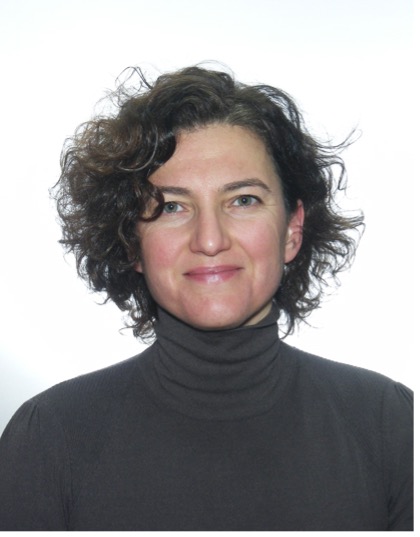 MONA JABER
MONA JABER
Mona Jaber (Senior Member, IEEE) received the B.E. degree in computer and communications engineering and the M.E. degree in electrical and computer engineering from the American University of Beirut, Lebanon, in 1996 and 2014, respectively, and the Ph.D. degree from the 5G Innovation Centre, University of Surrey, in 2017. She led the IoT Research Group, at Fujitsu Laboratories of Europe, from 2017 to 2019, where she researched IoT-driven solutions for the automotive industry. She is currently a Lecturer in IoT with the School of Electronic Engineering and Computer Science, Queen Mary University of London. Her research interests include zero-touch networks, the intersection of ML and IoT in the context of sustainable development goals, and IoT-driven digital twins. Mona was awarded the title of N2Women Rising Star in Computer Networking and Communications in 2022 and QMUL’s Outstanding Early Career Researcher in 2023. She pioneered the study of distributed acoustic sensors for intelligent trasnportation systems and, in 2022, won a new investigator award research grant of £514K to further this study for active travel modelling. In 2023, she started the Digital Twins for Sustainable Development Goals reasearch lab at QMUL. The lab is dedicated to technology innovation for realising SDGs and is founded on a multidisciplinary research approach that is led by social science, shaped by domain experts, and enabled by technology innovation. She is the treasurer of the IEEE Women In Engineering of the UK and Ireland and has participated in the organisation of carreer days, technology panels, and workshops in the UK including the Women in Smart Communications (WiSC) event special session at IEEE WCNC 2023 (https://wcnc2023.ieee-wcnc.org/program/women-smart-communications-event). She is a committee memeber of the IEEE Public Safety Technology initiative in Trasnportation.
 MAIKE LUIKEN
MAIKE LUIKEN
Maike Luiken has more than 30 years of professional experience in teaching, applied research and educational administration, leadership and community building; especially in linking industry partners, government agencies and researchers in advanced technology initiatives. In Sarnia, Canada, she led the Bluewater Sustainability Initiative, 2006 – 2013, and was the founding Director of the Lambton Manufacturing Innovation Centre. For eight years, she served as a Dean at Lambton College with various portfolios: School of Technology, Sustainable Development, Applied Research. Her strategic leadership in the development of the applied research & innovation capacity and portfolio led to Lambton College becoming one of the top Research Colleges in Canada. Her areas of interest and expertise span diverse technical areas from ICT, energy, and water to advanced manufacturing. She has particular interest in how progress and deployment of various technologies contributes – or not – to achieving sustainable development. She is currently serving/has been serving on numerous Boards of Directors and Committees, including IEEE, IEEE Canada, IEEE Canadian Foundation, Canadian Standards Council Steering Committee for the Canadian Data Governance Standardization Collaborative, Tech-Access Canada (founding member), Unmanned Systems Canada, Nano Ontario, Colleges Ontario Network for Industry Innovation (CONII), Ontario Centres of Excellence (OCE) Advanced Manufacturing Sector Advisory Board, Sarnia/Lambton Workforce Development Board, Sarnia/Lambton Chamber of Commerce, Rotary Club of Sarnia Foundation Board.
 NORDIN RAMLI
NORDIN RAMLI
Nordin Ramli has more than 20 years of experience in telecommunications industry from operation to planning, including research and development work. Previously, he worked with Telekom Malaysia Berhad, Kuala Lumpur, Malaysia, as a Network Engineer from 1999 to 2008, and as a Lecturer with Multimedia University, Cyberjaya, Malaysia, from 2008 to 2009. He is a Senior Staff Researcher with the Wireless Innovation Department, Corporate Technology Department, MIMOS Berhad, Kuala Lumpur. Here, he is managing the Research and Development work for MIMOS’s in house technology development to the government and enterprise sector, especially the Internet of Things (IoT) and big data-related projects. On the research and development (Research and Development), his interests include cognitive radio, TV white space, space-time processing, equalization, adaptive array system and wireless mesh networking, IoT, and big data analytic and 5G and beyond. Based on his work, he has published more than 100 journals and, conference papers, and filed more than 30 patents related to wireless communications which are pending at the World Intellectual Property Organization and Intellectual Property Corporation of Malaysia (MyIPO). Dr. Ramli is an award recipient of the Top Research Scientist Malaysia in 2018 and the Young Scientist Network by the Academy of Sciences Malaysia in 2014. He has been serving as an Associate Editor for the IEICE Communication Express (CoMEX) since June 2014. Dr Ramli participated in many IoT projects for sustainability including the Lake Chini in eastern Malaysia, a UNESCO biosphere reserve in the country. In this context, LoRa and Wi-SUN technologies were used to construct a system that can continue to operate autonomously with low power consumption as a self-employed network, and acquire and analyse information such as water quality and water level in real time at the research centre.
 CHE ZALINA ZULKIFLI
CHE ZALINA ZULKIFLI
Che Zalina Zulkifli is a Professor in the Computing Department of Sultan Idris (UPSI) Education University, Malaysia. She had over 23 years of professional teaching experience as a lecturer and active researcher in the Electronics & Electrical Engineering, IOT, Embedded System, and Wireless Sensor Network. Her research projects have been collaborated with multinational companies which contribute to a network that leads to new ideas and concrete research projects related to sustainbale development goals. For example, she designed the Economical Food Waste Composter (EFWC) to provide an efficient option to accelerate the transformation of food waste into compost atop Penang Hill. The EFWC has already been successfully trialled in selected schools and restaurants in Seberang Perai and George Town. This project aims to provide a solution to reduce the amount of food waste produced on Penang Hill that is disposed as general waste and finds itself in the state landfill. It will involve working closely with Penang Hill Corporation (PHC) to install two Food Waste Composters (EFWCs) which will serve food vendors, cafes and restaurants on the hill.The EFWC is able to process 50 kg of organic waste per-load. Assisted by heat, in-built fan, and microbes, and with a combination of brown waste in the form of leaves and clippings, compost can be harvested every five days.
 FABIO PATRONE
FABIO PATRONE
Fabio Patrone (Member, IEEE) received the B.E. degree and the M.E. degree in telecommunication engineering from the University of Genoa, Italy, in 2010 and 2013, respectively, and the Ph.D. degree from the Satellite Communication and heterogeneous Networking Laboratory, University of Genoa, in 2017. He is currently an Assistant Professor at the University of Genoa. His research interests include the application of Machine Learning (ML)-based techniques for routing, scheduling and handover in satellite communication networks, cybersecurity solutions for non-terrestrial networks, and the employment of networking principles, such as Network Function Virtualization (NFV), Software Defined Networking (SDN) and Multi-access Edge Computing (MEC) for satellite terrestrial integrated networks within 5G and IoT frameworks.
 FATIMAH IBRAHIM
FATIMAH IBRAHIM
Fatimah Ibrahim received her B.Sc.E.E. from Marquette University, USA in 1989. She obtained her M.Sc. Electronics (Medical Systems) from University of Hertfordshire, UK in 1994 and Ph.D. in Biomedical Engineering from University of Malaya (UM), Malaysia in 2005. She is a Professor of Biomedical Engineering, UM, the head of Centre for Innovation in Medical Engineering (CIME), and advisor for the Center of Printable Electronics, UM. She is the senior member of IEEE, fellow of Institute of Engineer Malaysia (IEM), and fellow of Academy Science Malaysia (ASM). She is a Professional Engineer with Practising Certificate (PEPC) registered under Board of Engineer Malaysia. Her research interests are in physiological measurement and modeling, biosensors, BioMEMS, bioinstrumentation, and artificial intelligence in medicine. She owned 16 patents including 3 commercialised patents. In recognition of her research innovations, she has received 9 top awards (Gold medal/best award/special award), 3 Silver Medals, and 2 bronze medals at various international and national invention exhibitions. She has been awarded the Top Research Scientist Malaysia (TRSM 2019) by the Academy of Sciences Malaysia (ASM) and the world’s top 2% scientist in 2022 reported by Stanford University. She received the IFMBE Laura Bassi Award 2022, an award attributed to a female biomedical engineer for her outstanding research contributions in the field of medical and biological engineering by the International Federation of Medical and Biological Engineering (IFMBE), USA. Professor Ibrahim is the Chair of IEEE Women in Engineering Malaysia Section.



